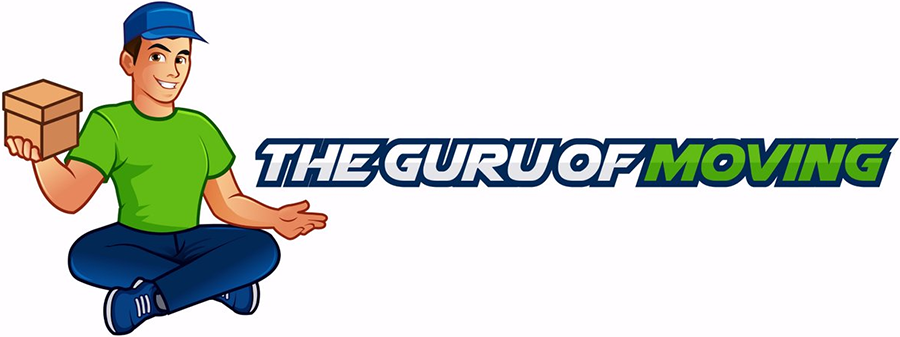Author: David
Are you looking to find free moving boxes in New York? Embarking on a move in the vibrant hustle and bustle of New York? If you’re looking to cut down on moving expenses and contribute to sustainability, the quest for free moving boxes is your ticket to a seamless transition. In the city that never sleeps, discovering where to find these essential boxes can be the key to a cost-effective and eco-friendly relocation. Join us as we unveil the top spots and strategies for obtaining free moving boxes in the heart of New York, turning your move into a resourceful and environmentally conscious adventure.
Where to get free boxes for moving in New York
Uhaul
Every U-Haul store has a “Take a Box, Leave a Box” bin on the premises with gently used boxes and other moving supplies left behind by earlier customers. They leave their boxes behind so that future movers, like you, can take them and use them free of charge. Not only does this help movers get the supplies they need at the lowest cost, but it also helps keep boxes out of landfills and strengthens everyones commitment to reusing moving boxes as many times as possible.
The best part is that with over 2,000 U-Haul stores, chances are there’s a U-Haul store and Take a Box, Leave a Box bin near you.
Visit the U-Haul Box Exchange Page
Another way to get free U-Haul moving boxes is by visiting our Exchange page. This helpful program was created to connect supply-needy customers with customers that have moving boxes and other supplies to spare. How it works is simple: After moving, U-Haul customers make a post about their leftover supplies. Other users can contact that customer and come and pick up the items. So, start searching the Exchange page today and see what your fellow DIY movers have to offer. Don’t forget to make your own post after your move is completed and help someone else who may need boxes!
FreeCycle
Join the New York Freecycle group, an great online platform committed to reducing waste and fostering a sense of community. Here, generous individuals share items they no longer need, and moving boxes often make the list. Freecycle not only aids you in acquiring free boxes but also contributes to a sustainable and eco-friendly approach to moving.
Craigslist is a great resource when it come to getting free boxes for moving in San Francisco. Make your way to the classifieds section on Craigslist, where locals often list items they’re looking to give away for free. Navigate to the “Free” section or search for moving boxes in the “For Sale” category, and you may stumble upon generous individuals eager to part with their used boxes. Engaging with the Craigslist community not only expands your options but also provides an opportunity to connect with fellow residents in need of a seamless and budget-friendly moving experience. Be sure to exercise caution and arrange for safe and convenient pick-up locations when utilizing this online resource.
Recycling Centers
Champion an eco-conscious move by heading to your local recycling center. Here, people drop off used boxes after unpacking, providing you with an opportunity to snag sturdy, reusable containers. This sustainable option not only aids your budget but also aligns with responsible waste management practices.
NextDoor
How to Check If Your Chicago Moving Company is Licensed and Insured
Relocating to a new home or office in the bustling city of Chicago can be a daunting task, and the last thing you want to worry about is the reliability of your moving company. Ensuring that your chosen movers are both licensed and insured is crucial for a smooth and stress-free moving experience. In this blog, we’ll walk you through the steps to verify the legitimacy of your Chicago moving company.
Why Licensing and Insurance Matter
Hiring a licensed and insured moving company offers several benefits:
- Legal Compliance: Licensed movers are required to adhere to state and local regulations, ensuring a level of professionalism and accountability.
- Protection: Insurance provides coverage for your belongings in case of damage or loss during the move. This gives you peace of mind and financial protection.
- Reliability: Licensed movers are often more experienced and reliable, increasing the likelihood of a successful and efficient move.
How to Check If Your Chicago Moving Company is Licensed and Insured
Step-by-Step Guide to Verify Licensing and Insurance
- Check for the Illinois Commerce Commission (ICC) License:
- Start by visiting the ICC’s website (https://www.icc.illinois.gov/) to search for licensed movers in Illinois.
- Look for a “Search for a Licensee” or similar tool on the website. You can typically find this in the “Consumer Information” or “Resources” section.
- Enter the name of the moving company or its ICC license number if you have it. This will provide you with the company’s licensing information.
- Verify that the company is authorized to provide moving services in the state.
- Ask for Proof of Insurance:
- Don’t hesitate to ask the moving company for a copy of their insurance certificate. This should include details of their insurance coverage, including cargo insurance that covers your belongings during the move.
- Ensure the insurance coverage is up to date and meets your needs.
- Check Online Reviews and Recommendations:
- Visit review websites, such as Yelp, Google Reviews, or the Better Business Bureau, to read customer feedback and ratings for the moving company.
- Look for any red flags in reviews, such as complaints about damaged items or unprofessional behavior.
- Get Everything in Writing:
- Always insist on a written contract that includes details of the move, the estimated cost, the schedule, and any additional services. This provides protection and clarity.
- Ensure the contract includes the moving company’s name, ICC license number, and insurance information.
- Ask for References:
- Request references from the moving company and contact previous customers to inquire about their experiences.
- If the company is reputable, they should have no problem providing references.
- Contact the Illinois Commerce Commission:
- If you have any doubts or concerns, reach out to the ICC for further verification. They can confirm a company’s status and help with dispute resolution if necessary.
Ensuring that your chosen Chicago moving company is licensed and insured is an essential step in guaranteeing the success of your move. Don’t hesitate to invest time and effort in this process, as it can save you from potential headaches and financial losses. Trustworthy, licensed, and insured movers can make your transition to your new home or office in Chicago a breeze.
Other Top Posts
How to start packing for a move.
How to fill nail holes in walls.
What size moving truck do I need.
Tips On How To Prevent Clutter In Your Home
Wondering how to prevent clutter in your home? Are you constantly surrounded by an overwhelming amount of stuff? Struggling to locate your essential ingredients while cooking or your go-to makeup products during your morning routine? It might be time to tackle the clutter in your life. However, decluttering can be a time-consuming and energy-draining process. So why not take a proactive approach and prevent clutter from invading your home in the first place? The good news is that it’s simpler than you might think. In this article, we’ll explore six effective ways to keep clutter at bay.
How to prevent clutter in your home
Resist the Urge to Buy in Bulk
Purchasing items in bulk can be a great money-saving strategy. However, the downside is that we often end up buying more than we actually need, resulting in cluttered shelves. The key here is selectivity. While you’ll eventually use up that entire case of toilet paper, that gigantic fourteen-pack of mayonnaise might take ages to finish, unless you’re a sandwich-making enthusiast. So, be discerning in your bulk purchases to avoid unnecessary clutter.
Bid Farewell to Disposable Food Containers
Disposable food containers have a knack for cluttering up your kitchen. They’re unwieldy, and the quest for the right lid can be exasperating. Moreover, those flimsy plastic containers don’t stand the test of time and won’t keep your food fresh in the long run. Invest in quality food containers, with glass being the optimal choice, for reusability and tidiness. Dispose of or recycle disposable containers promptly to keep your kitchen clutter-free.
Keep Reusable Bags in Your Car
If you find yourself drowning in a sea of reusable bags at home, it’s time for a reckoning. Sort through your collection and retire any that are dirty, damaged, or worn out. These bags often accumulate because we forget to take them when we’re on the go and end up buying more. To curb this clutter, relocate your reusable bags to your car and stash them in the trunk for easy access.
Incorporate Donation Bins in Your Closets
Maintaining a small donation bin or bag in your closets can streamline your decluttering efforts. Instead of returning clothing items that no longer suit your style or size, place them in the donation bin. When the bin is full, take a trip to your local thrift store. This practice not only helps you declutter but also keeps your closets organized with items you genuinely love. It’s especially useful for children’s rooms, given how rapidly they outgrow clothing.
Refuse Unnecessary Items
We’re all guilty of accepting things we don’t need, such as hotel conditioner samples when you’ve been using the same brand for years or a bag of sweaters when you live in a warm climate. Accumulating unnecessary items creates clutter and disarray in your home. If you find it challenging to refuse, make plans to donate or discard the items as soon as possible.
Frequent Mini Decluttering Sessions
You don’t need to set aside specific seasons or yearly intervals for decluttering. Instead, commit to decluttering whenever you notice a mess or as new items enter your home. After a grocery store haul, check your pantry for expired goods. Similarly, after a shopping spree, review your bathroom storage areas and dispose of products you no longer use. Set a timer for a quick five or ten-minute decluttering session, put on some music or a podcast, and get started.
Other Top Posts
How to start packing for a move.
How to fill nail holes in walls.
What size moving truck do I need.
How to dispose of paint when moving
When looking for moving companies in San Francisco you have multiple options. You can fill out our free quote form above and receive free quote from moving companies in SF. You can also look at the top moving companies in SF individually and reach out to them yourself. With this in mind we have put together a list of the top moving companies in SF below.
Moving to a new home is an exciting adventure, but it also comes with its fair share of challenges. One common dilemma many homeowners face when preparing to move is what to do with leftover paint. Whether you’re downsizing, relocating, or just decluttering, disposing of paint properly is essential for both environmental and safety reasons. In this comprehensive guide, we’ll explore various methods to help you responsibly and efficiently dispose of paint during your move.
The Importance of Proper Paint Disposal
Before diving into the methods, it’s crucial to understand why you should never simply toss paint in the trash or pour it down the drain. Paint contains harmful chemicals that can harm the environment and pose health risks if not handled correctly. These chemicals may include volatile organic compounds (VOCs), heavy metals, and other hazardous substances.
Improper disposal can lead to groundwater contamination, soil pollution, and damage to wildlife. To protect our environment and health, it’s essential to dispose of paint in an environmentally responsible manner.
How to dispose of paint when moving
Use it Up:
If you have a small amount of paint left, consider using it for touch-ups or small projects before moving. This way, you minimize waste and save money on buying more paint.
Donate:
If your paint is still in good condition and you no longer need it, consider donating it to a local charity, school, or community organization. They may have a use for it and appreciate the contribution.
Dry it Out:
Latex paint can be dried out and disposed of with regular household trash. To do this, remove the lid and let the paint air dry by placing it in a well-ventilated area, away from children and pets. Stir it occasionally to speed up the drying process. Once solidified, you can safely throw it away.
Recycle:
Some areas offer paint recycling programs that accept both latex and oil-based paints. Check with your local recycling center or hazardous waste facility to see if they accept paint for recycling. They may have specific guidelines for preparation and drop-off.
Hazardous Waste Disposal:
If your community doesn’t have a paint recycling program, you may need to dispose of paint as hazardous waste. Contact your local waste management authority to find out where and when you can drop off hazardous waste, including paint. Follow their instructions for packaging and disposal.
Paint Hardener:
You can purchase paint hardeners at hardware stores. Follow the product’s instructions to solidify the paint, making it safe for disposal in the regular trash.
Share with Neighbors:
If you have close neighbors or friends who are also moving or have home improvement projects, ask if they could use any leftover paint. Sharing resources can be mutually beneficial and reduce waste.
Local Buy/Sell/Trade Groups:
Many communities have online buy/sell/trade groups or social media platforms where you can offer items for free. Consider posting your leftover paint there, as someone in your area might be in need of it.
Paint Disposal Events:
Some cities or municipalities host hazardous waste collection events where you can drop off paint, among other items. These events are typically scheduled periodically, so keep an eye on local announcements and calendars.
Consult with a Paint Retailer:
Reach out to a local paint retailer or home improvement store and inquire if they have any recommendations for paint disposal or recycling. Some stores may have information on local paint disposal options or may even accept paint for recycling.
Conclusion
Properly disposing of paint when moving is not only environmentally responsible but also a crucial step in ensuring the safety and well-being of your community. By following the methods outlined in this guide, you can minimize waste, reduce your environmental footprint, and adhere to local regulations.
Remember that different locations may have varying rules and resources for paint disposal, so always check with your local authorities for specific guidance. By taking the time to dispose of paint responsibly, you can leave your old home with peace of mind and start your new journey with a clean, eco-conscious slate. Happy moving!
Other Top Posts
How to start packing for a move.
How to fill nail holes in walls.
What size moving truck do I need.
Moving Companies San Francisco
Looking for great moving companies in San Francisco? We are here to help. Simply fill in our free quote form above and receive free, no obligation quotes from moving companies in San Francisco.
There are so many moving companies in San Francisco it can be tough choosing one. Our free quote form allows you to enter you info once and receive free quotes from multiple moving companies in San Francisco. If you are still wondering how to choose the right moving company. Check out How to choose the right moving company.
Top Moving Companies San Francisco
When looking for moving companies in San Francisco you have multiple options. You can fill out our free quote form above and receive free quote from moving companies in SF. You can also look at the top moving companies in SF individually and reach out to them yourself. With this in mind we have put together a list of the top moving companies in SF below.

If you are look for a top moving company in San Francisco then you have to check out CareMore Moving and Storage. They are fully licensed and insured and serve the whole Bay Area and California. The specialize in residential and commercial moves and they also offer storage right in the heart of SF. They offer clear upfront pricing and they are never any hidden charges. When you book a move with them you will also receive a confirmation email confirming the dates / times and all pricing so that they is never any confusion. They will also give you a call the day before the move and another when they are on their way on move day. CareMore provide free no obligation quotes which they are able to provide virtually to save you time. Check them out at CareMore Moving or give them a call on 415-822-8547.

One Big Man One Big Truck is one of the top moving companies in SF. They cover all of the Bay Area and their website shows their clear and upfront pricing. The specialize in moving apartments and can also offer office moving services. Check them out at OneBigMan or give them a call on 415-821-9697

When looking for top moving companies in SF be sure to check out Corrib Moving & Storage. Corrib has experience dealing with moves of all sizes, and they can pack up a large home or a small apartment. This licensed and insured company makes sure that the items that they move are not damaged while being moved. This company can haul a piano from one place to another, and they also take care of other items that are bulky, heavy, and difficult to move. The Corrib Moving & Storage team arrives on time and quickly handles each move they are hired to handle. Visit them at Corrib Moving or give them a call on 415-282-6683
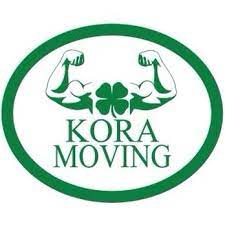
Kora moving local moving for both residential and business customers. They also offer piano moving and provide packing and storage services. Kora Moving provides affordably priced services and have a great team of friendly movers. When researching top moving companies in Sf be sure to check them out at Kora Moving or give them a call on 415-583-1189

Good Green Movings mission is to provide you with a safe, secure, sustainable and successful moving experience. They are able to provide moving services to multiple locations all across the back area. They aim to provide a green moving experience and their website will provide you with how they aim to do this. As part of their green mission they also use reusable plastic moving boxes. Check out our post on the benefits of plastic moving boxes. They are able to help you with small and large moves, local and long distance and can also perform commercial moves. When researching top moving companies in SF check them out at Good Green Moving or give them a call on 451-966-3153
If you frequently find yourself cutting into pork or probing chicken breasts to check for doneness, it might be the right moment to introduce a Bluetooth meat thermometer into your kitchen arsenal. A Bluetooth meat thermometer is an essential tool for ensuring the safety and precision of your protein cooking, providing real-time temperature monitoring through your smartphone or tablet. Say goodbye to guesswork based on color and texture alone.
Furthermore, a Bluetooth meat thermometer can also be used to monitor the temperature of liquids and alert you when your food is ready, all from the convenience of your mobile device. However, choosing the right Bluetooth meat thermometer is vital for achieving perfectly cooked chicken, beef, and more. Therefore, we’ve compiled a list of the top Bluetooth meat thermometers on the market to elevate your cooking game.
The MEATER Plus
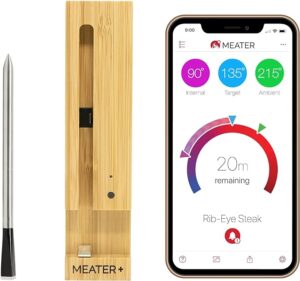
Are you a passionate cook, indoors or outdoors? The MEATER Plus is the wireless meat thermometer you’ve been waiting for. With its Long Range Model, it liberates you from wires, offering true flexibility. The app (compatible with iOS and Android) lets you monitor your cooking effortlessly, guaranteeing perfectly cooked meals. Equipped with two sensors, it tracks both meat temperature (up to 212°F) and external temperature (up to 527°F) simultaneously. Cleanup is a breeze as it’s dishwasher safe.
The Guided Cook System eliminates guesswork, guiding you through every step, and you can set custom alerts. MEATER Link extends your wireless range over WiFi, all achievable with a second smart device. Crafted from stainless steel, it’s water-resistant and easy to clean. With a range of 165 feet, maximum internal temperature of 212°F, and a maximum ambient temperature of 527°F, the MEATER Plus sets a new standard for meat thermometers, perfect for both seasoned chefs and beginners. Say goodbye to wires and guesswork, and take your cooking to the next level with MEATER Plus. BUY HERE
Inkbird IBT-4XS Bluetooth Wireless Grill BBQ Thermometer
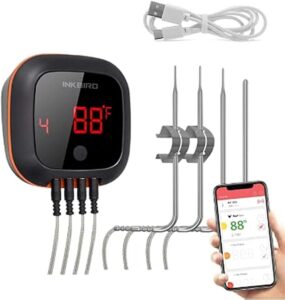
Inkbird’s 4-Probe Bluetooth Grill Thermometer is a game-changer for grill enthusiasts. It ensures accurate temperature readings by firmly inserting the probes into the wireless BBQ thermometer ports, preventing inaccuracies and erratic readings. With a wide temperature range of 32°F to 572°F (short-time measurement) and 32°F to 482°F (continuous monitoring), it’s suitable for various cooking styles.
The thermometer pairs seamlessly with Android or iPhone (GPS location must be open) and offers a connecting distance range of up to 150ft/50m, giving you the freedom to monitor your cooking from anywhere. The large LED screen is not only magnetic, allowing it to be easily attached to your smoker or oven, but it’s also rotatable for convenient temperature reading. With a rechargeable battery that lasts up to 40 hours, and a temperature graph function in the app, this grill thermometer is a must-have tool for serious grill masters. The package includes 1 Smart Meat Thermometer, 3 meat probes, 1 ambient probe, a USB charging cable, manual, and probe clips. Inkbird stands behind their product, ensuring customer satisfaction. Elevate your grilling game today with this remarkable Bluetooth Grill Thermometer. BUY IT HERE
UPMSX Smart Wireless Meat Thermometer
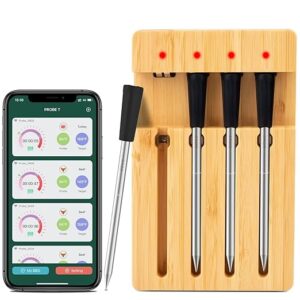
Say goodbye to guesswork and hello to precision with our wireless meat thermometer. It boasts 4 probes, allowing you to set different target temperatures for multiple meats simultaneously. No more juggling or second-guessing; this culinary companion saves time, energy, and pleases every guest’s taste. Packaged elegantly, it’s an ideal gift for cooking enthusiasts.
What sets this thermometer apart is its remarkable 165-ft ultra-wide wireless range, thanks to advanced Bluetooth 5.2 technology. A built-in Bluetooth repeater extends the range, keeping you informed about your meat’s temperature on your phone or tablet while you’re relaxing indoors. Offering quick and accurate real-time temperature readings with a precision of +/-1.8°F, it’s suitable for various cooking methods, making it a versatile addition to your kitchen. Powered by the PROBE TEMP APP, you can preset target temperatures based on USDA recommendations or customize them to your liking. Sound and vibration alerts signal when your food is ready, ensuring perfect results every time. Rechargeable and waterproof, this meat thermometer is designed for convenience and durability, with a quick 5-minute charge lasting 4-6 hours. Its premium 304 stainless steel and IP67-rated waterproof design make it easy to clean and resistant to rust. Note that the bamboo charger should not be rinsed with water. Elevate your cooking game and bring five-star restaurant-quality meals to your home with this exceptional wireless meat thermometer. BUY NOW ON AMAZON
BFOUR Meat Thermometer
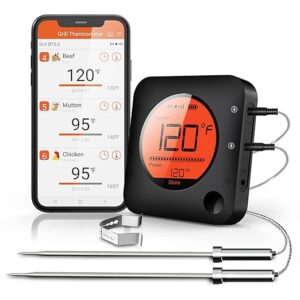
Cook like a pro with the BFOUR Wireless Meat Thermometer, boasting the most advanced Bluetooth 5.0 for a strong and reliable connection. Monitor your food from anywhere at any time using your smartphone, and say goodbye to the worry of overcooking. With over 11 USDA preset temperature settings on the user-friendly app, this thermometer is your culinary assistant, allowing you to customize preferences like Rare, Medium, and Well Done. The countdown timer ensures you never miss the perfect moment to remove your meat from the heat, and the real-time temperature graph empowers you to optimize your cooking.
This thermometer comes with 2 highly accurate probes to monitor different foods simultaneously, and it can support up to 6 probes for versatile cooking options. The wide temperature measurement range (33°F-572°F) and high accuracy of ±1°C/±1.8°F guarantee reliable results. The long, heat-resistant probe wire keeps you safe from burns, making it suitable for smoking, grilling, oven use, and more. Its large LCD display and backlit function make it easy to read in various conditions. This Bluetooth meat thermometer is not only functional but also aesthetically pleasing, winning the Red Dot Design Award. With certifications including RoHS, FCC, and CE, it’s a quality addition to your kitchen. Included with the BFOUR BBQ Thermometer are 1 Probe Clip, a user’s manual, and 2 stainless steel probes, and you can expand to use up to 6 probes by searching for “B07ZK34NJC” on Amazon. Backed by a worry-free 2-year warranty and friendly customer service, this thermometer is the perfect gift for cooking enthusiasts. If you encounter any problems, rest assured that the dedicated support team is ready to assist you within 24 hours. BUY NOW ON AMAZON
MeatStick Meat Master Bundle
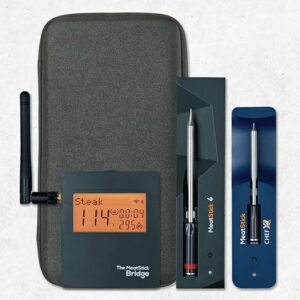
The MeatStick redefines the cooking experience with its next-gen smart wireless meat thermometers, featuring True Temperature Quad Sensors. Whether you’re cooking in your kitchen with an oven or air fryer or taking your culinary skills outdoors to the grill or smoker, these thermometers make the process hassle-free. The real innovation comes with the WiFi Bridge, which ensures you receive temperature signals anywhere with a WiFi or internet connection. Even without WiFi, you can get your temperature readings up to 300 feet away using the Bridge in Xtender mode.
With the MeatStick App, you have a personal smart sous-chef to monitor real-time temperatures, customize cook alerts, and receive notifications when your meat reaches perfection. The app also includes a guided cook list with different meats, maximizing your culinary options. It’s compatible with both iOS and Android devices, whether you’re using a smartphone or tablet. These thermometers are built to last, with both the MeatStick 4 and MeatStick Chef being dishwasher-safe, deep-fryer proof, and suitable for low and slow cooking methods like sous-vide. Their long-lasting battery performance, with 70+ hours for the MeatStick 4 and 18+ hours for the MeatStick Chef, ensures you have all the time you need for your culinary endeavors. Each Stick contains three internal sensors that can withstand up to 212ºF/100ºC, along with one ambient sensor capable of handling temperatures up to 572°F/300°C. And with a 30-day satisfaction guarantee and free returns, you can try out this innovative cooking tool with confidence. In the box, you’ll find the MeatStick 4 Set, MeatStick Chef X Set, WiFi Bridge, and a Carrying Case Pro (AA Batteries Not Included). Say goodbye to cooking guesswork and hello to precision with The MeatStick. BUY NOW ON AMAZON
Other Top Posts
How to start packing for a move.
Tips on how to prevent clutter in your home.
What size moving truck do I need.
Streamline Your Travel with Compression Packing Cubes: A Comprehensive Guide
Introduction
Are you tired of struggling with overpacked suitcases, messy travel bags, and limited space? The solution may be simpler than you think: compression packing cubes. These ingenious travel accessories have gained popularity among globetrotters and adventurers for their ability to maximize space, keep items organized, and simplify packing and unpacking. In this blog post, we’ll explore what compression packing cubes are, why you should use them, and which ones stand out as the best choices for your next journey.
What Are Compression Packing Cubes?
Compression packing cubes are ingenious travel organizers designed to help you make the most of your luggage space and simplify the packing process. They are essentially rectangular or cube-shaped containers made of lightweight and durable fabric. These cubes feature a unique two-compartment system, which sets them apart from regular packing cubes:
1. Main Compartment: This is where you place your clothing, shoes, and other travel essentials. The main compartment is typically quite spacious and can accommodate various items, depending on the cube’s size.
2. Compression Compartment: The magic of compression packing cubes happens here. The compression compartment is equipped with a set of compression zippers that run along the sides of the cube. When these zippers are closed, they exert pressure on the contents of the main compartment, effectively squeezing the air out and compressing your belongings.
How Do Compression Packing Cubes Work?
Compression packing cubes operate on a simple yet highly effective principle: air removal. Here’s how they work step by step:
Step 1: Packing: Start by placing your folded or rolled clothing and other items into the main compartment of the cube. You can organize your belongings by type, outfit, or any other method that suits your needs.
Step 2: Compress: After packing the main compartment, close the compression packing cube’s two-way zipper. As you do this, the compression zippers in the compression compartment are pulled, which creates tension along the sides of the cube.
Step 3: Air Removal: As the zippers move, they push the air out of the main compartment, gradually compressing your clothing and other contents. The more you pull the compression zippers, the tighter the compression, and the flatter and more compact your belongings become.
Step 4: Seal and Secure: Once your items are compressed to your satisfaction, simply seal the zippers to secure the compression. Your clothes and belongings are now tightly packed and ready for placement in your suitcase or travel bag.
Key Features of Compression Packing Cubes:
- Zippered Closure: Compression packing cubes typically have a two-way zipper closure, allowing you to easily access your belongings and control the compression level.
- Compressible Second Compartment: The magic happens in the second compartment. It features compression zippers that, when closed, reduce the volume of your clothes, effectively saving space in your luggage.
- Various Sizes: Compression packing cubes come in different sizes to accommodate various items like clothing, shoes, toiletries, and accessories. This ensures that you can neatly organize all your travel essentials.
Why Should You Use Compression Packing Cubes?
- Maximizes Luggage Space: Compression packing cubes help you make the most of your suitcase or backpack space by compressing your clothes, making them flatter and more compact.
- Keeps You Organized: These cubes are a game-changer when it comes to keeping your belongings organized. You can easily separate your clothing, shoes, and accessories, reducing the risk of wrinkling or damage during travel.
- Reduces Wrinkling: By keeping clothes neatly folded and compressed, you’ll find fewer wrinkles when you unpack at your destination.
- Simplifies Packing and Unpacking: When you arrive at your destination, unpacking is a breeze. Simply unzip the cubes and place them in your hotel dresser or closet. No need to rummage through your entire suitcase.
- Ideal for Multiple Stops: If you’re on a multi-destination trip, compression cubes make repacking easier and more efficient. You can quickly access specific items without disrupting your entire suitcase.
Top Picks for Compression Packing Cubes
- Eagle Creek Pack-It Specter Compression Cube Set: Known for their quality, Eagle Creek offers durable, lightweight cubes that efficiently compress your clothes.
TravelWise Packing Cube System: This budget-friendly option provides various cube sizes and colors for easy organization and identification.
eBags Hyper-Lite Packing Cube Set: These cubes are designed to be ultra-lightweight while still offering excellent compression capabilities.
AlamedaPacking Cube Set: This compression packing cube set offers space-saving benefits with its double zippers, durability due to lightweight rip-stop nylon, and excellent organization for travel. It also provides water resistance, making it a must-have travel accessory with a lifetime warranty.
Osprey Ultralight Packing Cube Set: Osprey’s cubes are designed with a focus on durability and are available in various sizes to suit your needs.
Conclusion
Compression packing cubes are a must-have travel accessory that can transform your packing and unpacking experience. By maximizing space, keeping your belongings organized, and reducing wrinkles, these cubes simplify the travel process. When choosing the best compression packing cubes for your needs, consider your travel style, luggage size, and personal preferences. With the right cubes in your suitcase, you’ll embark on your adventures with confidence and ease. Happy travels!
Other Locations
View a map of electronics drop-off locations or contact the following businesses or organizations to drop off, recycle, or donate your electronics.
Please note that some sites charge fees or don’t accept certain items. Check the location’s website or contact them to confirm before you drop off the items.
NewTech Recycling
NewTech Recycling offer comprehensive corporate e-waste recycling solutions to help you dispose of your electronic devices securely. From old computers and laptops to printers, scanners, and other electronic equipment, they have the expertise to handle a wide range of electronic waste items.
Take-Backs
You can return unwanted electronics to manufacturers for recycling or disposal for free. Electronic manufacturers, such as Samsung, Sony, or Toshiba, must accept electronics from residents at no cost.
Cell phones can also be dropped off at any store that sells service plans.
You can find more information about recycling electronics at the store where you purchased the item or at any store that sells the item. You can also call the manufacturer or check your brand’s website.
The NY State Department of Environmental Conservation (NYSDEC) keeps a list of registered electronics manufacturers and information about their e-waste acceptance programs on its website.
Find e-waste acceptance programs.
Mail-Back
Many brands offer free mail-back options. Check the manufacturer’s website or visit the NYS Department of Environmental Conservation (NYSDEC), which has a list of electronic equipment manufacturers registered in New York State. If a manufacturer refuses to recycle your electronics, report the company to NYSDEC online or call 1-800- 847-7332.
All Green Recycling
All Green Electronics Recycling offers local recycling drop off locations nationwide. Their Nationwide network of e-waste recycling centers allow you to find a local solution for electronics recycling, data destruction and on-site hard drive shredding near you. To find Recycling Near Me, navigate through the list to find an e-waste drop-off location near you or request an e-waste recycling pickup.
Who Regulates Moving Companies in Houston?
Introduction
Moving to a new home or office is an exciting yet daunting task. Whether you’re changing neighborhoods or crossing state lines, hiring a reputable moving company can significantly ease the process. But, how do you ensure that the moving company you choose is reliable and trustworthy? In Houston, like in many other places, there are regulatory bodies in place to protect consumers and maintain industry standards. In this blog post, we will explore who regulates moving companies in Houston and how these regulations benefit you, the consumer.
The Texas Department of Motor Vehicles (TxDMV)
In the state of Texas, including Houston, the primary regulatory authority overseeing the moving industry is the Texas Department of Motor Vehicles (TxDMV). The TxDMV enforces rules and regulations governing moving companies to ensure that they operate ethically and provide quality services.
Before you hire a mover, first check with TxDMVs Truck Stop, the database that can tell you whether a company is licensed with the TxDMV. A licensed Texas mover will have an “Active” TxDMV certificate number on file.
What the TxDMV Covers
- Licensing: All moving companies that operate within Texas, including Houston, are required to obtain a license from the TxDMV. This license signifies that the company has met certain criteria and is authorized to provide moving services in the state.
- Insurance Requirements: To protect consumers, moving companies are required to carry specific levels of insurance. This insurance ensures that your belongings are covered in case of damage or loss during the move.
- Transparent Pricing: The TxDMV mandates that moving companies provide clear and accurate pricing information to their customers. This helps prevent hidden fees and unexpected costs.
- Dispute Resolution: In the event of a dispute between you and your chosen moving company, the TxDMV provides a platform for resolution. This process helps ensure that consumers’ rights are protected.
Also be sure to check out
Better Business Bureau (BBB)
While the TxDMV primarily focuses on regulatory aspects, the Better Business Bureau (BBB) serves as a valuable resource for consumers seeking reputable moving companies in Houston. The BBB is a non-profit organization that collects and reviews consumer complaints and reviews about businesses, including moving companies. Their accreditation and rating system offer valuable insights into a company’s reputation and customer satisfaction.
When choosing a moving company in Houston, consider looking for BBB-accredited businesses with high ratings and positive reviews. This can help you make an informed decision and avoid potential scams or unprofessional movers.
Federal Motor Carrier Safety Administration (FMCSA)
If your move involves crossing state lines, you should also be aware of the Federal Motor Carrier Safety Administration (FMCSA). This federal agency regulates interstate moving companies, ensuring they adhere to safety and quality standards. Movers conducting interstate moves must be registered with the FMCSA and possess a unique USDOT number. You can verify a moving company’s compliance with FMCSA regulations on their website, providing an extra layer of assurance for your long-distance move.

Conclusion
Moving can be a stressful experience, but with the right moving company, the process becomes much smoother. Knowing who regulates moving companies in Houston is essential for your peace of mind. The Texas Department of Motor Vehicles, Better Business Bureau, and Federal Motor Carrier Safety Administration all play crucial roles in maintaining industry standards and protecting consumers.
Before choosing a moving company, do your research, check their licensing and accreditation, read reviews, and ensure they meet all regulatory requirements. By taking these steps, you can confidently hire a moving company in Houston that will safely and efficiently transport your belongings to your new home or office.
Suggested posts for you
How to fill nail holes in wall.
What size moving truck do I need.
Does Salvation Army take books?
Daly City Movers
Need Daly City Movers? Moving to a new city is an exciting yet challenging endeavor, and when that city is Daly City, you’re in for a treat. Nestled just south of San Francisco, Daly City offers a unique blend of urban living, scenic beauty, and a thriving community. Whether you’re relocating for work, education, or a change of scenery, having the right moving company by your side can make all the difference. In this blog post, we’ll explore the top 5 movers in Daly City that can help make your transition a seamless one.
The Top 5 Daly City Movers

If you are look for a top moving company in Daly City then you have to check out CareMore Moving and Storage. They are fully licensed and insured and serve the whole Bay Area and California. The specialize in residential and commercial moves and they also offer storage right in the heart of SF. They offer clear upfront pricing and they are never any hidden charges. When you book a move with them you will also receive a confirmation email confirming the dates / times and all pricing so that they is never any confusion. They will also give you a call the day before the move and another when they are on their way on move day. CareMore provide free no obligation quotes which they are able to provide virtually to save you time. Check them out at CareMore Moving or give them a call on 415-822-8547.

One Big Man One Big Truck is one of the top moving companies in Daly City. They cover all of the Bay Area and their website shows their clear and upfront pricing. The specialize in moving apartments and can also offer office moving services. Check them out at OneBigMan or give them a call on 415-821-9697

When looking for top moving companies in Daly City be sure to check out Corrib Moving & Storage. Corrib has experience dealing with moves of all sizes, and they can pack up a large home or a small apartment. This licensed and insured company makes sure that the items that they move are not damaged while being moved. This company can haul a piano from one place to another, and they also take care of other items that are bulky, heavy, and difficult to move. The Corrib Moving & Storage team arrives on time and quickly handles each move they are hired to handle. Visit them at Corrib Moving or give them a call on 415-282-6683

Clutch Moving Company provide free moving quotes and are able to help you 7 days a week. The company provides residential and commercial moving services as well as long distance and staging services. When you book a move with Clutch you are able to review and electronically sign your estimate and you will receive a call ahead of time on move day to let you know they are on their way. Their goal with every move is to move you safely and efficiently, but most importantly have you satisfied with your experience at the end of each move. When look for top moving companies in Daly City be sure to check out Clutch Moving or give them a call on 650-535-2424

Kora moving local moving for both residential and business customers. They also offer piano moving and provide packing and storage services. Kora Moving provides affordably priced services and have a great team of friendly movers. When researching top moving companies in Daly City be sure to check them out at Kora Moving or give them a call on 415-583-1189
In conclusion.
The process of moving to Daly City can be made significantly smoother with the help of reputable and experienced moving companies. The top 5 movers mentioned in this blog post have all earned their place through their dedication to customer satisfaction, attention to detail, and commitment to professionalism. By choosing the right moving partner, you can look forward to a stress-free and successful move to this vibrant and welcoming city.
Suggested posts for you
How to fill nail holes in wall.
What size moving truck do I need.
Does Salvation Army take books?
How To Schedule a Free Furniture Donation Pick up in Dallas
Wondering how to schedule a free furniture donation pick up in Dallas? In the bustling city of Dallas, where kindness meets convenience, the act of donating furniture takes on a whole new level of simplicity. If you find yourself with furniture to spare and a desire to give back to your community, look no further. In this blog post, we’ll introduce you to notable companies in Dallas that offer free furniture donation pickup services, making your altruistic endeavor both effortless and impactful.
1. Goodwill Industries
Website: https://www.goodwill.org/
Overview: Goodwill is a widely recognized nonprofit organization that supports job training and employment opportunities for individuals with barriers to employment. They accept a variety of furniture items in good condition and offer free pickup services across their numerous Dallas locations.
How to Schedule Pickup: Visit their website and navigate to the “Donate Stuff” section. Enter your zip code to find the nearest donation center, and follow the instructions to schedule a free pickup at your convenience.
2. The Salvation Army
Website: https://www.salvationarmyusa.org/
Overview: The Salvation Army is known for its broad range of social services. They accept furniture donations to fund their charitable initiatives, including disaster relief and community support programs.
How to Schedule Pickup: Visit their website and search for the “Donate” section. Find your local Salvation Army location, and use their online scheduling tool to set up a free furniture pickup.
3. Habitat for Humanity ReStores
Website: https://www.habitat.org/restores
Overview: Habitat for Humanity ReStores sell donated items to support their mission of building homes for those in need. Donating furniture to ReStores helps fund affordable housing projects in your community.
How to Schedule Pickup: Visit their website, locate your nearest ReStore, and inquire about their furniture donation pickup services. Contact them via phone or email to schedule your free pickup.

4. Furniture Bank of Metro Dallas
Website: https://www.furniturebankdallas.org/
Overview: The Furniture Bank of Metro Dallas focuses on providing essential furnishings to families transitioning from homelessness to permanent housing. They accept gently used furniture items to furnish the homes of those in need.
How to Schedule Pickup: Visit their website and go to the “Donate Furniture” page. Fill out the online form with details about your furniture items, and the organization will contact you to arrange a free pickup.
5. Dwell with Dignity
Website: https://www.dwellwithdignity.org/
Overview: Dwell with Dignity is a nonprofit organization that empowers families struggling with homelessness and poverty by providing them with well-designed, fully furnished homes.
How to Schedule Pickup: Visit their website and navigate to the “Donate Furniture” section. Fill out the online donation form, and the organization will get in touch to coordinate a free furniture pickup.
Conclusion
In the heart of Dallas, turning generosity into action has never been easier. These remarkable organizations offer free furniture donation pickup services, making it effortless to contribute to causes that uplift your community. By choosing one of these reputable companies, you’re not only simplifying the process but also making a profound impact on the lives of those in need. Let your unwanted furniture find new purpose, and let your generosity shine in the vibrant city of Dallas.
Suggested posts for you
How to fill nail holes in wall.
What size moving truck do I need.
Does Salvation Army take books?
How to start packing for a move
Wondering how to start packing for a move? Moving to a new home is an exciting chapter in life, but the process of packing up your belongings can be overwhelming. With proper planning and organization, you can make the packing process more manageable and even enjoyable. In this guide, we’ll walk you through a step-by-step approach to starting your packing journey for a smooth and stress-free move.
- Create a Packing Timeline
Before you dive into packing, establish a clear timeline. Depending on the size of your home and the amount of stuff you have, start packing well in advance of your moving day. A general rule of thumb is to begin at least 4-6 weeks ahead. This allows you to pack gradually and avoid the last-minute rush.
- Gather Packing Supplies
Collect all the necessary packing supplies to ensure you have everything you need at hand. Essential supplies include:
- Sturdy moving boxes in various sizes
- Bubble wrap and packing paper
- Packing tape and dispenser
- Markers for labeling
- Scissors and box cutters
- Plastic bags for small items
- Blankets or padding for fragile items
- Wardrobe boxes for clothing
- Sort and Declutter
Moving presents a great opportunity to declutter your belongings. Go through each room and decide what you want to keep, donate, sell, or discard. Consider the usefulness and sentimental value of each item. Downsizing before a move can save you time, money, and effort in packing and unpacking.
- Create an Inventory
As you declutter, create an inventory of the items you plan to move. This list will help you keep track of your belongings and assist in the unpacking process. You can use a simple spreadsheet or a dedicated inventory app for this purpose.
- Pack Room by Room
To maintain organization, pack one room at a time. Begin with rooms you use less frequently, such as spare bedrooms or storage spaces. Clearly label each box with the room it belongs to and a brief description of its contents. This will save you time when unpacking in your new home.
- Protect Fragile Items
Wrap delicate items like glassware, ceramics, and electronics with bubble wrap or packing paper. Use blankets or padding for larger fragile items. Fill empty spaces in boxes with packing paper to prevent movement during transit and reduce the risk of breakage.
- Use the Three-Box Method
When packing, employ the three-box method: one box for items to keep, one for items to donate/sell, and one for items to discard. This approach streamlines the sorting process and prevents items from being packed without intention.
- Label Thoughtfully
Labeling is key to a smooth unpacking experience. Clearly mark boxes with their contents and the room they belong to. Additionally, color-coding or numbering boxes can help you easily identify which boxes should be unpacked first in your new home.

- Pack Essentials Separately
Pack a separate box with essential items you’ll need immediately upon moving in. Include items like toiletries, a change of clothes, important documents, and basic kitchen supplies. Keep this box easily accessible.
- Enlist Help
Packing can be a daunting task, so don’t hesitate to ask for help from friends, family, or professional movers. Having extra hands can speed up the process and make it more enjoyable.
Conclusion
Starting the packing process for a move might seem overwhelming, but with a well-structured plan and some organization, you can make the experience smoother and even enjoyable. By creating a packing timeline, gathering the necessary supplies, decluttering, and packing room by room, you’ll be well on your way to a successful move. Remember, the key is to stay organized, prioritize, and keep your end goal in mind: settling into your new home with ease.
Suggested posts for you
How to fill nail holes in wall.
What size moving truck do I need.
Does Salvation Army take books?
Storage Unit Prices
Storage units have become a crucial asset for individuals and businesses alike. Whether you’re moving, downsizing, or need extra space for your belongings, self-storage facilities offer a convenient solution. However, understanding storage unit prices and finding the best deals can be challenging. In this blog post, we’ll delve into storage unit prices, factors that influence storage unit prices and provide you with valuable tips to save money on your storage needs.
Cost of storage units
According to analysis from move.org who analyzed over 3,500 quotes, the average storage unit cost is approximately $180 per month. Prices from top self-storage companies vary significantly, ranging from approximately $70 to $300 per month, depending on factors such as size, type, and availability. Since storage unit prices are demand-driven, you can potentially save on costs by comparing quotes from multiple storage facilities in your area.
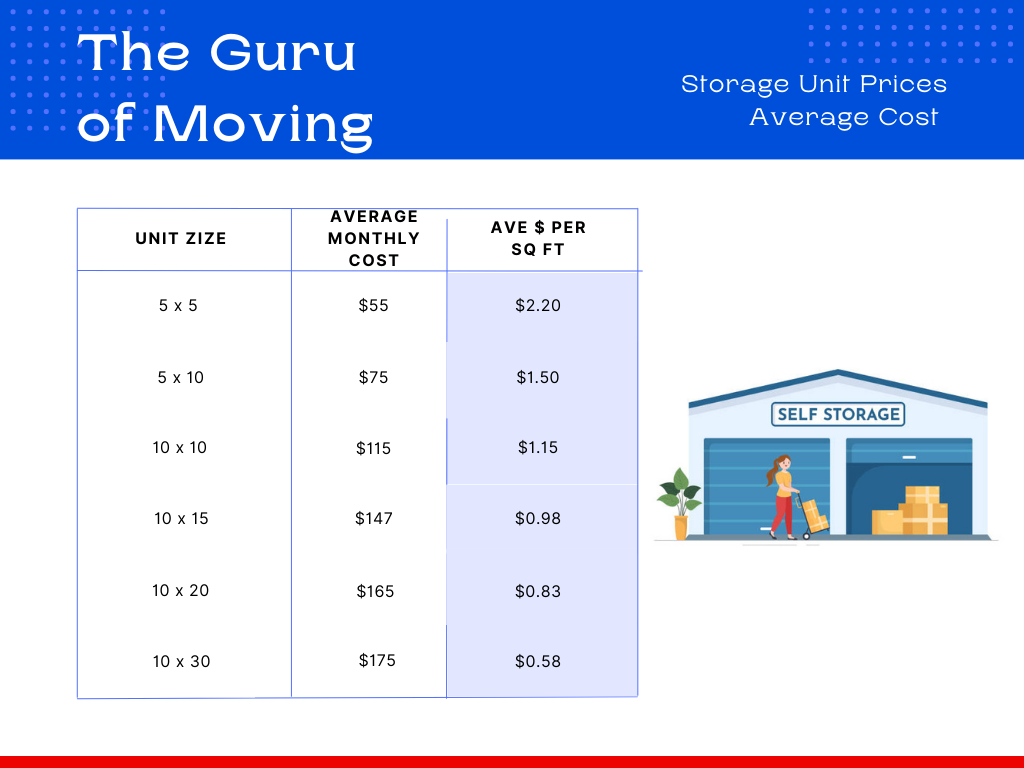
Factors Affecting Storage Unit Prices
- Location: Storage unit prices can vary significantly based on the region or city you’re in. Facilities located in urban areas or areas with high demand often come with higher price tags compared to those in less populated regions.
- Size: One of the most significant factors impacting the cost of a storage unit is its size. Smaller units, such as 5×5 or 5×10, are generally more affordable, while larger units, like 10×20 or 10×30, come with higher monthly rates.
- Type of Unit: Climate-controlled units, which provide temperature and humidity control, are usually more expensive than standard units. The added protection they offer justifies the higher costs, especially if you plan to store delicate or valuable items.
- Amenities and Features: Storage facilities that offer additional amenities like 24/7 access, enhanced security systems, on-site management, and convenient loading areas may have higher rental fees.
- Seasonal Demand: Storage unit prices can fluctuate based on seasonal demand. During peak moving seasons, such as summer when many people relocate, prices may be higher. Conversely, off-peak periods may offer more affordable rates and promotional discounts.

Tips to Save on Self-Storage Costs
- Size Optimization: Evaluate your storage needs carefully and select the smallest unit that can accommodate your belongings. Avoid overpaying for unused space.
- Location Consideration: If feasible, look for storage facilities in less populated or suburban areas, as they may offer more competitive prices.
- Shop Around: Compare quotes from different storage facilities in your area. Online platforms and comparison websites can simplify this process and help you find the best rates.
- Seasonal Discounts: Keep an eye out for special offers and discounts during off-peak periods or seasonal promotions from storage companies.
- Negotiate and Ask for Deals: Don’t hesitate to negotiate the rental price with the storage facility manager, especially if you plan to rent for an extended period.
Conclusion
Storage unit prices can fluctuate based on multiple factors, including location, unit size, amenities, type, and seasonal demand. By considering these factors and employing cost-saving strategies, you can make the most out of your storage solution without breaking the bank. Remember to research thoroughly, read customer reviews, and ask questions before committing to a storage facility. With careful planning and a bit of research, you can find a storage unit that meets your needs and budget, providing you with peace of mind and a clutter-free living or working space.
Suggested posts for you
How to fill nail holes in wall.
What size moving truck do I need.
Does Salvation Army take books?
Moving into a new house checklist
Items GoodWill can accept
Goodwill happily accepts the following new or gently used items:
- Vehicles—We accept donations of vehicles in all conditions. Learn more and fill out a vehicle donation form on our Vehicle Donation Page to get started.
- Clothing, shoes and boots
- Jewelry
- Hats, gloves, mittens, and scarves
- Books, records, CDs, videotapes, and DVDs
- Games, toys, and sports equipment
- Housewares: dishes, glassware, kitchen utensils, lamps, and small appliances
- Collectibles, antiques, knickknacks, and other giftware
- Hand tools and small power tools
- Domestics: linens, curtains, blankets, etc.
- Electronics including but not limited to:
- CPUs
- Flat-screen monitors (no CRTs)
- Hard drives
- Laptops
- Cell phones
- VCRs
- DVD players
- TVs working flat screen (no CRTs)
To help you determine your donations fair market value Goodwill is happy to provide a “Value Guide” that offers average prices in our stores for items in good condition.
Items GoodWill can not accept
They CANNOT accept the following items:
- Furniture
- Chairs, stools, or couches
- Mattresses and bed frames
- Desks or other office furniture
- Tables of any kind
- Dressers, bookcases, entertainment centers, etc.
- Large exercise equipment
- Pianos or organs
- CRT TVs
- CRT Computer Monitors
- Household chemical products such as pesticides, paint, paint thinner, drain cleaner, oven cleaner, aerosols, and other environmentally unfriendly waste products.
- Automotive hazardous waste such as tires, lead-acid batteries, additives, gasoline, oils, antifreeze, etc.
- Large appliances such as refrigerators, freezers, stoves/ovens, washers/dryers, air conditioners, dehumidifiers, furnaces, trash compactors, water heaters, large console stereos, freon-based appliances, etc.
- Personal care items such as shampoo, conditioner, nail polish remover, shaving cream, hairsprays, or shavers
- Fragrance items
- Carpet or carpet padding
- Plumbing fixtures or building materials
- Traditional recyclables such as glass, newsprint, office paper, cardboard, plastics, magazines, junk mail, etc.
- Weapons such as guns, bows and arrows, ammunition, etc.
- Cribs, car seats, walkers or other products that do not meet the current safety standards of the US Consumer Product Safety Commission, including recalled items.

If you would like other place to donate your books to also check out our post on Where to donate books when moving.
Salvation Army Accepted Items
Items Salvation Army does not Accept
BUILDING MATERIALS/FIXTURES
Air Conditioners
Blinds all types
Building supplies of ANY type
Built-In Appliances
Carpet or Padding
Counter Tops
Curtain rods, Drapery Rods, Drapes
Doors & Door Frames
Fencing (all kinds), include barbed wire
Furnaces/Wall Heaters
Garbage Disposals
Hide-A-Beds
Jacuzzis/Hot Tubs
Plumbing Fixtures: Sinks, Toilets, Bathtubs, Shower doors
Sofas (sectionals)
Water Heaters or softeners
HAZARDOUS or SAFETY ISSUES
Batteries / Car Parts including tires and wheels
Guns, Firearms, and Ammunition
Hazardous Materials of ANY type
Insecticides, Paint or other toxic materials
Propane Tanks
Refrigerators due to freon
Baby items such as: Cribs, car seats, strollers, rockers, playpens.
Medical equipment such as walkers, wheelchairs, canes, crutches, etc.
Medical supplies such as hand sanitizer, masks, etc.
LARGE OR BULKY ITEMS
Entertainment Centers
Hospital Beds
Mattresses (spring or memory foam)
Office cubicles
Office Machines, Copiers
Satellite Dishes
Swing Sets or Playground Equipment
Waterbeds

Moving to a new home can be a stressful and overwhelming experience, but it can also be an opportunity to make positive changes in your life, including reducing your environmental impact. By taking steps to make your move more green, you can minimize your carbon footprint and help protect the planet. Here are 10 tips to help you make your move more environmentally-friendly:
Want a Green Move? 10 Tips to have a Green Move
Declutter before you move:
Decluttering before the move plays a vital role in having a green move. By decluttering, you reduce the number of items that need to be transported, ultimately minimizing the resources and energy required for the move. This results in a reduced carbon footprint and less waste generation. Additionally, decluttering presents an opportunity to donate or sell unwanted items, giving them a second life and preventing them from ending up in landfills. By consciously deciding what to keep and what to let go, you promote a more sustainable lifestyle and create a positive environmental impact.
Use eco-friendly packing materials:
Using eco-friendly packing materials promotes a green move by minimizing waste, reducing resource demand, and supporting recycling efforts. These materials, like recycled boxes and biodegradable packing peanuts, can be reused or recycled after the move, further reducing environmental impact. They are made from sustainable sources, contributing to a lower carbon footprint. By choosing eco-friendly options, you inspire others to make environmentally conscious choices. Opting for eco-friendly packing materials is a simple yet effective way to have a sustainable and eco-friendly move.
Rent reusable moving boxes:
Renting reusable moving boxes is an excellent way to have a green move. By opting for reusable boxes, you eliminate the need for single-use cardboard boxes, which often end up in landfills after the move. Renting these boxes reduces the demand for new boxes and saves trees that would have been used in their production. Additionally, reusable boxes are typically made from durable materials, ensuring that they can be used for multiple moves, further reducing waste. Renting also eliminates the hassle of disposing of cardboard boxes after the move. By choosing reusable moving boxes, you contribute to a more sustainable and environmentally friendly moving process. Check out our post on The Benefits of Using Reusable Moving Boxes
Choose a green moving company:
Look for moving companies that prioritize sustainability and have eco-friendly practices such as using biodiesel fuel, using recycled materials, and implementing energy-efficient practices in their warehouses and offices.
Donate unwanted items:
Instead of throwing away unwanted items, consider donating them to a local charity or thrift store. This will keep them out of landfills and give someone else the opportunity to use them.
Use green cleaning products:
Traditional cleaning products often contain harmful chemicals that can be detrimental to the environment and human health. By opting for green cleaning products, you choose safer alternatives that are biodegradable, non-toxic, and made from natural ingredients. These products are better for the air quality in your home and minimize water pollution when they are rinsed away. Additionally, green cleaning products often come in recyclable or refillable packaging, reducing waste. By using eco-friendly cleaning products during your move, you contribute to a healthier living environment and minimize the negative impact of chemical pollutants on the planet. Buy Green Cleaning Products Here
Choose energy-efficient appliances:
Energy-efficient appliances consume less energy during operation, reducing both your energy bills and carbon footprint. Look for appliances with high Energy Star ratings, as they meet strict energy efficiency guidelines. These appliances are designed to maximize performance while minimizing energy waste. By selecting energy-efficient models for your new home, you contribute to conservation efforts, reduce greenhouse gas emissions, and promote a more sustainable lifestyle. Additionally, energy-efficient appliances often come with advanced features that help you optimize resource usage and save water, further enhancing their environmental benefits. Buy Energy Efficient Appliances
Use old moving boxes
Instead of renting reusable moving boxes you can save some money and still help the environment by using old moving boxes. Ask your moving company if they provide second hand moving boxes or pick them up for free on NextDoor or Facebook Marketplace etc. Check out our post on Where to find free moving boxes for your move.
Recycle and donate packing materials:
Recycling cardboard boxes, bubble wrap, packing paper, and other materials helps divert them from landfills and conserves valuable resources. By properly recycling these materials, you contribute to the circular economy and reduce the environmental impact of your move. Additionally, donating packing materials, such as boxes or bubble wrap, to others who may need them extends their usability and prevents unnecessary waste. It also promotes a sense of community and reduces the need for new packaging materials. By prioritizing recycling and donation, you actively participate in sustainable practices and minimize the environmental footprint of your move.
Recycle old electronics:
Electronic waste, or e-waste, contains hazardous materials that can harm the environment if not properly disposed of. Instead of throwing away old electronics, recycling them ensures that valuable materials are recovered and harmful substances are handled responsibly. Many communities have e-waste recycling programs or designated drop-off locations where you can safely dispose of your old electronics. By recycling your old electronics, you prevent them from ending up in landfills, reduce the extraction of raw materials needed for new devices, and promote the reuse of valuable resources. This helps to conserve energy, reduce pollution, and protect the environment.

Moving to San Francisco can be an exciting and daunting experience all at once. As one of the most vibrant and bustling cities in the world, San Francisco offers a unique lifestyle and a plethora of opportunities. However, with such a diverse culture, it is essential to know some important things before making your move. Here are a few key things you should know when moving to San Francisco.
Moving to San Francisco – 10 Things you should know before you move
High Cost of Living:
San Francisco is known for being one of the most expensive cities in the world. From housing to groceries, everything in San Francisco can be costly. Therefore, it is crucial to plan your budget well in advance and be prepared for high costs.
Transportation:
San Francisco has an efficient transportation system, including buses, subways, and cable cars. However, owning a car in San Francisco can be challenging due to high parking costs and limited space. Consider public transportation or ride-sharing services as a more convenient and affordable option.
Weather:
San Francisco has a temperate climate, which means it’s not too hot or too cold all year round. However, the city is known for its unpredictable weather patterns, so it’s always best to bring layers and be prepared for sudden changes.
Neighborhoods:
San Francisco has a diverse range of neighborhoods, each with its unique charm and culture. Before moving, research the different areas and determine which one is the best fit for your lifestyle and preferences.
Job Market:
San Francisco is home to some of the world’s biggest tech companies, making it a hub for tech-related jobs. However, competition for jobs can be fierce, so it’s essential to have a well-crafted resume and a strong network.
Diversity:
San Francisco is one of the most culturally diverse cities in the world. Embrace the unique cultures and traditions of the people you meet and be open to new experiences.
Outdoor Activities:
San Francisco is a city known for its scenic beauty and outdoor activities. From hiking trails to beaches, there is an abundance of opportunities to enjoy the great outdoors.
Homelessness:
Unfortunately, San Francisco is also known for its high homeless population. Be aware of your surroundings and take necessary precautions to ensure your safety.
Nightlife:
San Francisco is a city that never sleeps, and there are endless options for entertainment and nightlife. From bars and restaurants to concerts and shows, there’s always something to do.
Earthquakes:
San Francisco is located on a major fault line and has experienced several significant earthquakes in the past. Be prepared for potential earthquakes and ensure that your home is earthquake-proof.
Get free moving quotes from quality moving companies.
Oakland Movers
Embarking on a journey to a new home is a transformative experience that can be both exciting and overwhelming. The heart of the Bay Area, Oakland, with its eclectic neighborhoods and vibrant culture, welcomes individuals and families from all walks of life. However, the process of moving, with its intricate planning, meticulous packing, and logistical challenges, can cast a shadow over this otherwise exhilarating prospect. In the midst of this, Oakland offers a diverse array of moving companies, each vying to provide a seamless transition. To navigate through this maze of choices and ensure a move that’s as smooth as the city’s jazz melodies, we’ve meticulously curated a list of the top 5 Oakland movers that have established themselves as paragons of reliability, professionalism, and dedicated service.
The Top 5 Oakland Movers

If you are look for a top moving company in SF then you have to check out CareMore Moving and Storage. They are fully licensed and insured and serve the whole Bay Area and California. The specialize in residential and commercial moves and they also offer storage right in the heart of SF. They offer clear upfront pricing and they are never any hidden charges. When you book a move with them you will also receive a confirmation email confirming the dates / times and all pricing so that they is never any confusion. They will also give you a call the day before the move and another when they are on their way on move day. CareMore provide free no obligation quotes which they are able to provide virtually to save you time. Check them out at CareMore Moving or give them a call on 415-822-8547.

Commander Moving believes no two moves are alike. In an effort to make moving fun, Commander Moving makes use of a great crew and the best equipment to relocate small businesses, medium-sized companies, and large corporations in a variety of industries. Fully licensed and insured, Commander Moving Inc. are well equipped to anticipate and handle any bumps on the road. If you are looking for top moving companies in Oakland check them out at Commander Moving or give them a call on 415-407-5043
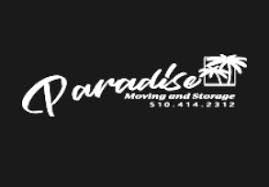
Customer satisfaction is Paradise Moving’s primary goal. With attention to detail, they take the time to make sure each move is completed to your liking. Paradise Moving prices are fair and allow them to pay their professional, trained employees a living wage. All employees have been there long-term and attend required training sessions, while all contracts, bills, and payments are processed paperless to ensure transparency and security. Check them out at Paradise Moving or give them a call on 617-488-8643

Good Green Movings mission is to provide you with a safe, secure, sustainable and successful moving experience. They are able to provide moving services to multiple locations all across the back area. They aim to provide a green moving experience and their website will provide you with how they aim to do this. As part of their green mission they also use reusable plastic moving boxes. Check out our post on the benefits of plastic moving boxes. They are able to help you with small and large moves, local and long distance and can also perform commercial moves. When researching top moving companies in Oakland check them out at Good Green Moving or give them a call on 451-966-3153

Sweet Lemon Moving Services offers quick moving solutions for local, San Francisco, Bay Area, and long-distance relocations in the state of California. The number one priority at Sweet Lemon is safety, and you can rest easy knowing their employees will move all of your belongings in a stress-free environment from beginning to end. Any and all necessary precautions are taken to ensure a secure transfer of your possessions. If you are looking for a top moving companies in Oakland be sure to check out Sweet Lemon Moving or give them a call on 415-500-4298
Conclusion
The journey of moving, while marked by the physical transportation of belongings, is ultimately a journey of the heart. The top 5 Oakland movers we’ve unveiled understand this and have elevated moving to an art form. As you prepare to transition to a new chapter in Oakland’s vibrant story, consider entrusting your move to these paragons of expertise and dedication. With their assistance, your move won’t just be a relocation; it will be a beautifully orchestrated transition to a new symphony of life.
Get free moving quotes from quality moving companies.
Moving can be a daunting task, and deciding on the right time to move can be just as challenging. It’s important to consider several factors before you decide on a moving date to ensure a smooth and successful move. In this blog post, we’ll explore the best time to move and the factors you should consider when choosing a moving date.
When is the best time to move: Factors to consider
Factor 1: Weather
The weather is an important factor to consider when choosing a moving date. Depending on where you live, extreme weather conditions like snow, rain, or heatwaves can make the move more challenging. It’s best to choose a moving date during a mild season to avoid any weather-related issues.
Factor 2: Availability of Moving Companies
Moving companies can get busy during peak moving seasons, making it challenging to book a reliable and affordable moving company. The best time to move is during the off-peak season, which is usually during the fall and winter months when fewer people are moving.
Factor 3: School Schedule
If you have children, their school schedule is an important consideration when choosing a moving date. Moving during the school year can disrupt their education, so it’s best to move during the summer break or holiday season when school is not in session.
Factor 4: Work Schedule
Your work schedule is another important factor to consider when choosing a moving date. If you’re working full-time, it’s best to choose a moving date that doesn’t interfere with your work schedule. You may need to take some time off work to prepare for the move, so plan accordingly.
Factor 5: Availability of Housing
If you’re moving to a new city or state, it’s important to consider the availability of housing. Research the housing market and choose a moving date that aligns with the availability of housing in your desired location. It’s also important to consider the lease agreement of your current home and ensure that you give proper notice to your landlord before moving out.
Factor 6: Personal Commitments
Lastly, personal commitments such as weddings, vacations, or family events are important considerations when choosing a moving date. You don’t want to miss out on important events or celebrations because of the move, so plan your moving date around your personal commitments.
Factor 7: Moving Costs
Moving costs can vary depending on the time of year. Summer is usually the peak moving season, and moving companies may charge more during this time. To save money on your move, consider moving during the off-peak season, when prices may be lower.
Factor 8: Personal Health and Safety
Moving can be physically demanding and can take a toll on your health. Consider your personal health and safety when choosing a moving date. If you have any health concerns or physical limitations, it’s best to choose a moving date that allows you to take the necessary precautions and avoid any potential health risks.
Factor 9: Distance and Logistics
The distance and logistics of your move are also important considerations. Moving long-distance or cross-country requires more planning and preparation, so you’ll need to choose a moving date that allows you enough time to make all the necessary arrangements.
Factor 10: Community Events
Community events such as festivals or parades can make moving challenging. These events can cause road closures, traffic jams, and other logistical issues that can affect your move. Be sure to check the local events calendar and choose a moving date that avoids any community events that may disrupt your move.
Get free moving quotes from quality moving companies.
The 8 Best Moving Apps
We have put together the 8 best moving apps to make your move that much easier. Moving to a new home can be an exciting adventure, but let’s face it: the process of packing up your life and relocating can also be quite overwhelming. From organizing your belongings to finding reliable movers, there’s a lot to manage. Fortunately, we live in an era where technology can lend a helping hand, making your moving experience smoother and more efficient than ever before.
In this post, we’ve compiled a list of the 10 best moving apps that are designed to simplify every step of your relocation journey. Whether you’re looking to create detailed inventories, hire professional help, or even map out your new space, these apps have got you covered. Say goodbye to moving stress and hello to a seamless transition! If you are moving yourself be sure to check out our truck size calculator to help you decide what size moving truck you will need.
Join us as we explore these cutting-edge applications that can revolutionize the way you move. From comprehensive checklists to virtual floor plans, you’ll discover a wide range of features that will streamline your moving process, making it a breeze from start to finish.
So, if you’re planning a move in the near future or simply curious about how technology can enhance the experience, keep reading. These top-rated apps are here to help you stay organized, save time, and make your move a resounding success. Let’s dive in and unlock the power of these 10 best moving apps!
1 – Lugg
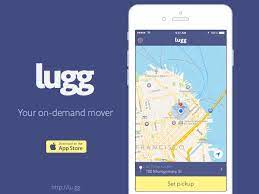
Lugg is an on-demand moving and delivery service app that connects you with local movers and drivers who can help you with various tasks. Whether you need assistance with furniture delivery, junk removal, or small moves, Lugg aims to provide a convenient and reliable solution.
With Lugg, you can request a pickup truck, van, or larger vehicle, depending on your specific needs. The app allows you to schedule a same-day or advanced booking, and you can track your driver in real-time for added convenience. Lugg’s network of drivers is equipped to handle heavy lifting and can assist you with loading, unloading, and transporting your items safely and efficiently.
What sets Lugg apart is its ease of use and flexible options. You can choose between one or two movers, select the vehicle size that suits your requirements, and even request additional services like packing or assembly. The app provides transparent pricing, and you can receive an estimate upfront before confirming your booking.
Whether you’re moving to a new home, picking up a large purchase, or decluttering your space, Lugg offers an on-demand solution that brings professional help right to your doorstep. It’s worth considering if you’re looking for a convenient and reliable moving and delivery service.
2 – Move Advisor

MoveAdvisor is a comprehensive moving app designed to assist you throughout every stage of your move, making the process as organized and stress-free as possible. Whether you’re moving across town or to a new city, this app offers a range of features and tools to help you plan, prepare, and execute your move efficiently.
One of the key features of MoveAdvisor is its interactive moving timeline. The app provides a customizable timeline that breaks down the entire moving process into manageable tasks and suggests when to complete them. From notifying your utility companies about the address change to scheduling packing and hiring movers, MoveAdvisor ensures you stay on track and don’t miss any crucial steps.
In addition to the timeline, MoveAdvisor provides comprehensive checklists for each stage of the move. These checklists cover a wide range of tasks, such as decluttering, packing, hiring movers, and arranging for services at your new home. You can mark off completed tasks, add personal notes, and track your progress, giving you a clear overview of what needs to be done.
MoveAdvisor also offers helpful tips and advice to guide you through the moving process. Whether it’s packing techniques, moving with pets, or handling delicate items, the app provides valuable insights and suggestions to make your move smoother and more efficient.
Furthermore, MoveAdvisor allows you to store and organize important documents related to your move, such as lease agreements, moving quotes, or insurance policies. This feature helps keep all your essential paperwork in one place, easily accessible whenever you need it.
With its user-friendly interface and comprehensive features, MoveAdvisor is a valuable tool for anyone planning a move. It helps you stay organized, ensures you don’t overlook critical tasks, and provides helpful resources to make your move a success. Whether you’re a first-time mover or a seasoned pro, MoveAdvisor can simplify the process and alleviate the stress associated with relocating.
3 – Task Rabbit

TaskRabbit is a highly versatile on-demand services platform that connects users with skilled Taskers for a wide range of tasks. Whether you need help with household chores, furniture assembly, moving assistance, or handyman services, TaskRabbit offers a reliable solution. The platform’s extensive network of qualified and background-checked Taskers ensures you can find the right person for the job.
Using TaskRabbit is a straightforward process. You start by posting a task with a description of what you need help with. Taskers in your area will then provide offers, including details on their rates, experience, and customer reviews. This allows you to choose the Tasker that best fits your requirements and budget. Once you’ve selected a Tasker, you can communicate directly with them to discuss the specifics of your task and schedule the service at your convenience.
TaskRabbit’s transparent pricing is another advantage. You’ll have a clear understanding of the cost upfront, so there are no surprises when it comes to billing. This transparency allows you to plan and budget accordingly. By delegating tasks to skilled Taskers through TaskRabbit, you can save valuable time and energy while ensuring the job is done professionally and efficiently.
In summary, TaskRabbit is a versatile on-demand services platform that connects users with qualified Taskers for various tasks. With its user-friendly interface, extensive network of Taskers, and transparent pricing, TaskRabbit simplifies the process of outsourcing tasks, allowing you to focus on what truly matters to you. Whether it’s household tasks, furniture assembly, moving help, or other projects, TaskRabbit is there to provide the assistance you need.
4 – Dolly

Dolly is an on-demand moving and delivery service app that connects you with local Helpers who can assist you with various tasks. Whether you need help with furniture delivery, moving heavy items, or packing and unpacking, Dolly offers a convenient solution for your moving needs.
With Dolly, you can request a Helper and a vehicle based on the specific requirements of your task. The app provides upfront pricing, so you know the cost of the service before booking. You can schedule your Dolly service for a time that suits you, and you have the option to choose additional services like storage or assembly if needed.
One of the key advantages of Dolly is its network of reliable and insured Helpers. These Helpers are experienced in handling all types of moves, ensuring your items are transported safely and securely. Dolly also offers a feature called “Dolly Helpers and Hands,” where you can hire Helpers to assist with tasks like lifting, carrying, and even packing or unpacking your belongings.
The Dolly app is designed to make the moving process seamless and stress-free. From browsing available services to tracking your Dolly in real-time, the app provides a user-friendly experience. Whether you’re moving locally or need help with a one-time delivery, Dolly offers a convenient platform to connect you with trustworthy Helpers who can get the job done efficiently.
In summary, Dolly is an on-demand moving and delivery app that connects you with reliable Helpers to assist with various tasks. With its upfront pricing, flexible scheduling, and range of additional services, Dolly provides a convenient solution for your moving and delivery needs. Whether you’re relocating or require assistance with transporting items, Dolly’s network of Helpers is there to provide efficient and reliable service.
5 – Updater

Updater is a comprehensive moving app designed to simplify the process of changing your address and transitioning to a new home. It offers a range of features and tools to streamline the often tedious and time-consuming tasks associated with moving. With Updater, you can easily update your address with various organizations, transfer utilities, forward mail, and even connect with reputable moving companies.
One of the standout features of Updater is its address change service. Instead of individually notifying each organization about your address change, Updater provides a centralized platform where you can update your address with multiple entities simultaneously. From banks and credit card companies to subscription services and government agencies, Updater saves you the hassle of navigating through numerous websites or making countless phone calls.
In addition to address change assistance, Updater offers a variety of tools to simplify your move. It provides a moving timeline, customizable checklists, and tips to help you stay organized and on track throughout the moving process. You can also find local service providers, such as movers, storage facilities, and internet providers, through Updater’s network of trusted partners.
Overall, Updater is a valuable tool for anyone planning a move. It streamlines the address change process, provides helpful resources and guidance, and connects you with trusted service providers. With its user-friendly interface and comprehensive features, Updater takes the stress out of moving and helps ensure a smooth transition to your new home.
Get moving supplies delivered from Amazon.
6 – My Move

“My Move” is a comprehensive moving app that simplifies the relocation process, providing tools and resources to plan, organize, and execute a successful move. With its user-friendly interface and extensive features, “My Move” alleviates the stress and overwhelm associated with moving.
The app’s personalized moving checklist guides you through each step, considering your specific details like home size, distance, and family members. It ensures no essential detail is overlooked, allowing you to track progress, mark completed tasks, and set reminders.
“My Move” offers valuable resources and tips on packing, moving with pets, transferring utilities, and finding reputable movers. It also includes a digital inventory feature to track belongings and estimate their value for insurance purposes.
In summary, “My Move” is a user-friendly app that empowers you to take control of your move. With personalized checklists and valuable resources, it streamlines the relocation process, making it easier to settle into your new home.
7 – Clutter

Clutter is an innovative on-demand storage service that aims to revolutionize the way you store and manage your belongings. Receive one months free storage when you click this link. With Clutter, you can declutter your living space, create more room, and have easy access to your items whenever you need them, without the hassle of traditional self-storage facilities.
The process of using Clutter is simple and convenient. First, you schedule a pickup through the app, and a team of professional movers will come to your location to pack and transport your items to a secure storage facility. You can track your items in real-time through the app and even request specific items back whenever you need them. With Clutter’s flexible storage options, you can store as few or as many items as you need, making it a versatile solution for different storage needs.
Clutter prioritizes the safety and security of your belongings. Their storage facilities are equipped with state-of-the-art security features, including 24/7 monitoring, climate control, and individual item tracking. They also offer a high level of protection, including coverage for items in storage.
What sets Clutter apart is its commitment to providing a seamless and user-friendly experience. The app allows you to manage your storage inventory, schedule pickups and deliveries, and even add photos and descriptions to each item stored. With their responsive customer support team, you can easily get assistance or make any changes to your storage plan.
In summary, Clutter offers a modern and convenient solution for storage needs. With its on-demand pickup and delivery service, secure storage facilities, and user-friendly app interface, Clutter makes storing and accessing your belongings hassle-free. Whether you’re looking to declutter your home, temporarily store items during a move, or simply create more space, Clutter provides a reliable and efficient storage solution. Receive one months free storage
8 – Thumbtack

Thumbtack is an online platform that connects consumers with skilled professionals for a wide range of services. Whether you need a handyman, photographer, personal trainer, or wedding planner, Thumbtack makes it easy to find and hire professionals who meet your specific needs.
With Thumbtack, you can post a job request, review quotes and proposals from qualified service providers, and communicate with them directly through the platform. The platform offers a convenient booking and secure payment system, ensuring a smooth transaction.
Thumbtack’s extensive network of professionals and customer reviews provides transparency and helps you make informed decisions when hiring. Whether you’re looking for home services, event planning, wellness professionals, or creative services, Thumbtack connects you with the right professionals to get the job done.
- Change the Locks
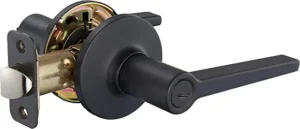
The first thing you should do when you move into a new home is to change the locks. This is because you don’t know who may have a spare key to your new home, such as previous owners or real estate agents. Changing the locks will provide peace of mind and ensure that only you and your family have access to your home. Buy New Locks Here
- Install Security Cameras

Installing security cameras is a great way to deter potential burglars and keep an eye on your home when you’re away. There are many affordable security camera options on the market that can be easily installed by a professional or DIY. Check out our Best Video DoorBells without Subscription
- Install Smoke and Carbon Monoxide Detectors

Smoke and carbon monoxide detectors are essential for keeping your home and family safe. Make sure to install detectors in every bedroom and on every level of your home. Test them regularly to ensure they are working properly. Buy Smoke and Carbon Monoxide Detector Combo
- Be mindful of social media: Avoid posting updates on social media about your new home or your travel plans. This information can be used by burglars to plan a break-in.
- Secure Doors and Windows
Check all doors and windows to make sure they are secure. Consider adding extra locks or reinforcing the frames if needed. It’s also a good idea to install window sensors that will sound an alarm if someone tries to open them.
- Install Outdoor Lighting
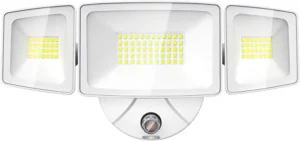
Outdoor lighting is another effective way to deter potential burglars. Install motion-activated lights around your home’s perimeter and in areas that are particularly dark or secluded.
- Trim Landscaping
Overgrown trees and bushes can provide cover for burglars to hide behind. Trim back any overgrown landscaping that could provide cover or access to your home.
- Consider a safe:
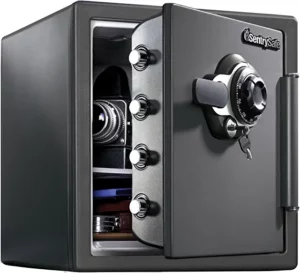
If you have valuable items that you want to protect, consider installing a safe in your home. This can provide an extra layer of protection for important documents, jewelry, and other valuables.
- Be Cautious of Strangers
Be cautious of strangers who come to your door, especially those who claim to be from utility companies or service providers. Always ask for identification and contact the company to confirm their identity.
- Have an Emergency Plan
Lastly, have an emergency plan in place in case of a fire or break-in. Make sure everyone in your home knows the plan and practice it regularly. Check out Ready.gov/makeaplan
In conclusion, there are several ways to make your new home safe and secure. By following these top 10 tips, you can protect your home and your family from potential dangers and have peace of mind knowing that you’re doing everything you can to keep your home safe.
Get free moving quotes from quality moving companies.
Packing Tips
Moving can be a stressful and overwhelming experience, but there are some things you can do to make the transition easier. One of the best tips for a smooth move is to pack an “open first” box. This box contains all the essentials you’ll need immediately upon arrival at your new home, such as toiletries, snacks, and a change of clothes. Check our all our packing tips.
The “open first” box should be packed with the understanding that you may not have access to all of your belongings right away, so it’s important to include items that will make your first night in your new home more comfortable. Some other things you might consider including in your open first box are:
- Bedding: Pack a set of sheets, blankets, and pillows so you can make your bed as soon as you arrive.
- Basic kitchen supplies: A few plates, cups, and utensils will allow you to prepare a simple meal or snack without having to unpack all of your kitchenware.
- Electronics: If you can’t go without your morning coffee or tea, be sure to pack your coffee maker or electric kettle in your open first box.
- Medications: Make sure any essential medications are easily accessible and not buried in a box.
- Important documents: Birth certificates, passports, and other important documents should be kept in a separate folder or envelope that’s easy to access.
Remember to label your open first box clearly, so it’s easy to identify among all your other boxes. It’s also a good idea to keep this box with you during the move, rather than packing it onto the moving truck. This way, you’ll have easy access to all your essentials when you arrive at your new home.
In conclusion, packing an open first box is an essential step in making your move as stress-free as possible. By planning ahead and including all the essentials you’ll need right away, you can start settling into your new home with ease.
Get free moving quotes from quality moving companies.
So it’s moving time and although most of us put it off for as long as we can, eventually we have to start packing up everything so that we are ready for the big day. One of the most difficult and time consuming rooms to pack is definitely the kitchen. It can be quite daunting when we open up them cupboards and are faced with an array of glasses, bowls, plates and your best china, all of which you now have to pack safely and securely into boxes for your big move but with the right supplies, it can be a breeze. Whether you’re moving into a new home or just rearranging your kitchen, having the essential supply kit list will make the process much smoother. Here’s a list of the essential items you’ll need to pack up your kitchen:
Essential supply list when packing a kitchen
1 – Dish Pack Boxes – Dish pack boxes are very similar to your standard moving boxes only they are much thicker which in turn offers much more protection for your breakables. Having these thicker boxes may cost a little more per box but it will mean that when your boxes are squeezed into a moving truck or other boxes set on top of them your fragile items inside will have a much better chance of staying safe. Buy Here
2 – Unprinted Packing Paper – As a mover myself, the number one piece of advice I would give someone when packing breakables is when in doubt use more paper. Although we do recommend using form pockets and dividers also, in my opinion those items should always be accompanied by having packing paper around them. Packing paper not only adds another level of protection when wrapped around your items but it should also be used to fill in any little gaps between your items which will hold them all in place during the move. Buy Here
3 – Foam Pouches – When packing up all those tricky plates, cups and glasses, foam pouches offer an initial quick and easy way to get the first level of protection around your fragile items. As mentioned above I personally feel that one their own they don’t offer a good enough level of protection and should be used in conjunction with packing paper around them. Combining the two will leave you with a great level of protection around each item. Buy Here
4 – Glass Divider Kits – In my opinion, anyone who is not comfortable simply wrapping all their fragile items in packing paper then these dividers are an absolute must. They fit perfectly into all standard size moving boxes and make packing your stemware, wine, glass bottles and glasses and absolute breeze. Simply place the dividers into your boxes and place your fragile items into the slots, it’s that simple. If you like you can always choose to put a layer of paper on the bottom of the boxes and some paper around the tops for extra protection but that is completely optional. Buy Here
5 – Packing Tape – Now I know what you’re thinking, packing tape! Isn’t this obvious? Well as a mover with over 15 years experience I can assure you that unfortunately not everyone realizes that they need to tape their boxes. Please, please, please do not fold the tops and bottoms of your boxes. If you do this the folds will simply give out under pressure and everything will fall out of the boxes. Always be sure to securely tape the top and bottoms of all your boxes to help keep everything safe. Buy Here
6 – Kitchen Box Labels – Although it’s possible to simply write kitchen on each box. Using clean, crisp, clear and bold printed color coded labels will take the guess work out of what any messy markers say. What we really like about these is that it makes it so clear for your movers as to where the boxes should go, so you wont have to being moving wrongly placed boxes around your home after the move. Buy Here
7 – Ziploc bags – Ziploc bags are great for packing up small items like silverware and cooking utensils. They will keep your items organized and make them easy to find when you’re unpacking. Buy Here
8 – Permanent markers – You’ll need a few permanent markers to label your boxes. Labeling your boxes will make it easier to find specific items when you’re unpacking. Buy Here
9 – Moving blankets – If you have larger kitchen items like appliances or furniture, you may want to use moving blankets to protect them during the move. Moving blankets can be purchased from a moving company or a home improvement store. Buy Here
10 – Bubble wrap – In addition to packing paper, you may want to use bubble wrap to add an extra layer of protection to your fragile items. You can purchase bubble wrap from a moving company or a home improvement store. Buy Here
Packing up a kitchen can be a lot of work, but with the right supplies, it can be much easier. By using this essential supply kit list, you’ll be able to pack up your kitchen quickly and efficiently, so you can get back to cooking and entertaining in your new space.
Get free moving quotes from quality moving companies.
Renting a storage unit can be a great solution for individuals and businesses looking to store their belongings or inventory. However, with so many different sizes and configurations available, it can be challenging to determine the right size for your needs. Renting a unit that is too small can lead to cramped and disorganized storage, while renting one that is too large can result in wasted space and unnecessary costs. In this blog post, we will provide you with a comprehensive guide on how to determine the appropriate size storage unit for your specific needs, so you can make an informed decision and ensure that your belongings are stored safely and securely.
How big a storage unit do I need?
Check out our free storage unit size calculator
To make it easy and to get you started we have a built a Storage Unit Size Calculator. Simply choose from the list of items which ones you plan on storing and we will calculate the size of storage unit you will need to fit everything, its that easy. It will even calculate what size of truck you would need to move all the items. Try it out at Storage Unit Size Calculator.
A guide to how much each size storage unit can hold:
5′ x 5′ Storage Unit: This is the size of a small walk-in closet and can hold small furniture pieces such as a dresser, a chair, and several boxes. It’s also perfect for storing seasonal items, such as holiday decorations.
5′ x 10′ Storage Unit: This size unit is similar to a large walk-in closet and can hold the contents of a small studio apartment. This includes a queen-sized bed, a dresser, a sofa, and several boxes.
10′ x 10′ Storage Unit: This size unit can hold the contents of a one-bedroom apartment, including large furniture items such as a king-sized bed, a couch, and a dining table. It’s also perfect for business inventory or equipment.
10′ x 15′ Storage Unit: This unit is similar to a large bedroom and can hold the contents of a two-bedroom apartment or a small house. This includes several large furniture pieces such as a sectional sofa, a dining room set, and multiple boxes.
10′ x 20′ Storage Unit: This size unit is similar to a one-car garage and can hold the contents of a three-bedroom house. It’s perfect for larger items such as appliances, pianos, and large furniture pieces, as well as multiple boxes.
10′ x 30′ Storage Unit: This size unit can hold the contents of a four- or five-bedroom house, including large items such as multiple couches, appliances, and large furniture pieces. It’s also ideal for storing vehicles, boats, or other large equipment.
These are general guidelines, and the specific amount a storage unit can hold may vary based on the way items are arranged and the size and shape of the items themselves. It’s always best to consult with the storage facility to determine the appropriate size unit for your needs.
What else to consider when determining what size of a storage unit you will need.
- Take an inventory of your items The first step in determining the right storage unit size is to take an inventory of all the items you plan to store. This includes furniture, appliances, boxes, and any other items you may need to store. Make a list of everything and try to estimate the total volume of your belongings. This will help you determine the cubic footage of storage space you need.
- Consider how you plan to store your items The way you plan to store your items will also affect the size of the unit that you will need. If you plan to stack boxes or items on top of each other, you may need a larger unit to accommodate the height. On the other hand, if you plan to store items that are irregularly shaped or can’t be stacked, you’ll need a unit with more floor space.
- Take measurements of your items To get an accurate estimate of the space you need, take measurements of your larger items like furniture and appliances. This will help you determine if a particular storage unit is tall enough or wide enough to accommodate your items.
- Research storage unit sizes Storage units come in a variety of sizes, from small lockers to large rooms. Research the sizes available at your local storage facility and compare the dimensions to the items on your inventory list. Most storage facilities will have a size guide or calculator to help you determine the appropriate unit size for your needs.
- Consult with the storage facility Finally, consult with the storage facility to get their recommendations based on your specific storage needs. They can help you select a unit that is the appropriate size and configuration for your items. They may also have suggestions for packing and organizing your belongings to make the most of the space you have.
Here are some popular websites to find storage units:
- SpareFoot (www.sparefoot.com): SpareFoot is an online marketplace that helps you find, compare, and book self-storage units. The website allows you to search for units based on your location, size requirements, and budget. You can also read reviews and compare prices of different storage facilities in your area.
- Storage.com (www.storage.com): Storage.com is another online storage marketplace that allows you to search for storage units by location, size, and type. You can also filter your search based on features such as climate control and 24-hour access. The website provides access to deals and discounts offered by storage facilities in your area.
- Public Storage (www.publicstorage.com): Public Storage is a nationwide chain of self-storage facilities that offers a wide range of unit sizes and configurations. The website allows you to search for units based on your location, size requirements, and budget. You can also reserve and pay for your unit online.
- CubeSmart (www.cubesmart.com): CubeSmart is another national storage chain that offers a variety of sizes and features. The website allows you to search for units based on your location and size requirements. You can also read reviews and reserve your unit online.
- Extra Space Storage (www.extraspace.com): This is a national chain that offers a variety of storage unit sizes and features. The website allows you to search for units based on your location, size requirements, and budget. You can also reserve and pay for your unit online.
These websites can help you find storage units that meet your specific needs, and many offer online booking and payment options for added convenience. However, it’s always a good idea to research the storage facility before making a reservation to ensure that it meets your security and climate control needs.
Moving can be an exciting and fresh start, but it can also be a stressful and expensive process. Between hiring a moving company, buying packing supplies, and transporting your belongings, the costs can quickly add up. However, with some careful planning and smart decisions, you can save money and make your move a lot easier. In this blog post, we’ll explore five ways to save money on your next move. Whether you’re moving across town or across the country, these tips can help you save money and reduce the financial burden of moving.
10 ways to save money on your next move
- Purge before you pack: Before you start packing, go through your belongings and donate or sell anything that you don’t need. This will not only save you money on packing supplies but also reduce the weight of your move, which can help you save on transportation costs.
- DIY packing: Use items you already have, such as blankets, towels, and clothing, to wrap fragile items. You can also save money by packing yourself instead of hiring movers to do it for you.
- Shop around for moving companies: Get quotes from several companies and compare their rates and services. Be sure to read reviews and check their credentials before making a decision.
- Move during off-peak times: Try to schedule your move during weekdays or non-summer months. Moving companies often charge higher rates during peak times, so you can save money by scheduling your move during slower periods.
- Take advantage of tax deductions: If you’re moving for work, you may be eligible for tax deductions. Keep track of your moving expenses, including packing supplies, transportation costs, and lodging, and consult a tax professional to see if you qualify for any deductions.
- Get free packing supplies: Check with local grocery stores or bookstores to see if they have any spare boxes you can use. You can also ask friends and family who recently moved if they have any extra supplies you can use. Check out our guide on Where to get free moving boxes.
- Use a rental truck: Consider renting a truck instead of hiring a moving company. This can be a more affordable option, especially if you have a lot of items to move. Check out companies like U Haul, Penske and Budget for the cheapest truck rentals.
- Sell unwanted items: Sell any unwanted items to make some extra cash. You can sell items online, at a garage sale, or through consignment shops. This not only saves you money on transportation costs but also helps you declutter and simplify your move.
- Pack and unpack yourself: Consider packing and unpacking yourself. This can save you money on packing and unpacking services provided by moving companies.
- Use a portable storage container such as the one you get from UPACK. Portable storage containers are a great option if you need to store your items for a short period of time. They can be delivered to your home, loaded at your convenience, and stored until you’re ready to move into your new home. This can be more affordable than renting a storage unit or hiring a moving company.
By following these tips, you can save money and reduce the financial burden of moving. With some careful planning and smart decisions, you can enjoy a stress-free transition to your new home.
Other useful resources.
- How many boxes do I need to move.
- 13 Steps on how to prepare for a move out.
- Best tape for moving boxes.
- How big a storage unit do I need.
New Apartment Grocery List
Moving into a new apartment is an exciting time, but it can also be overwhelming. Sometimes putting together that new apartment grocery list can get overlooked. Between unpacking, settling in, and adjusting to a new space, it can be easy to forget the little things that make a house a home. One of those little things is having a well-stocked kitchen. A kitchen that is stocked with essentials and a few treats can make mealtime a breeze, help you save money, and ensure you always have the ingredients you need on hand.
To help you get started, we’ve put together a grocery list of items that you should consider buying for your new apartment. This list includes the basics, like bread, milk, and eggs, as well as a few snacks and items that will add flavor to your meals. Whether you’re an experienced cook or just starting out, this grocery list will help you get the most out of your new kitchen and make your new apartment feel like home. Also be sure to check out our guide on your first apartment kitchen essentials.
New Apartment Grocery list
- Bread: Essential for making sandwiches, toast, and French toast.
- Milk: A staple for cereal, coffee, tea, and cooking.
- Eggs: Versatile ingredient for breakfast, lunch, dinner, and snacks.
- Pasta: Quick and easy dinner option, can be dressed up or down.
- Rice: Side dish or base for stir-fries and other dishes.
- Vegetables: Essential for a balanced diet, can be eaten raw or cooked.
- Fruits: Snack or ingredient for smoothies and other recipes.
- Spices: Adds flavor to meals, can be used in a variety of dishes.
- Condiments: Adds flavor to sandwiches, dips, and other dishes.
- Canned goods: Convenient ingredient for soups, stews, and other recipes.
- Snacks: Perfect for a quick bite or when entertaining guests.
- Butter: Essential ingredient for cooking and baking.
- Cooking oil: Essential ingredient for cooking and baking.
- Sugar: Sweetener for coffee, tea, and baking.
- Flour: Essential ingredient for baking and thickening sauces.
Having all of these items on your grocery list is a great idea for several reasons. It will save you time and money by eliminating the need to constantly make trips to the grocery store. You’ll always have the ingredients you need on hand, whether you’re whipping up a quick breakfast or a elaborate dinner. Additionally, having a well-stocked kitchen will provide you with a sense of comfort and security, making your new apartment feel like a true home. By having these essential items on hand, you’ll be able to cook and bake with ease, while also enjoying a variety of healthy and delicious meals.
Other posts you may be interested in
Best video doorbells without subscription
First apartment kitchen essentials
Top 10 essential items for your new apartment
How much does it cost to move a piano?
The cost to move a piano can vary depending on several factors, such as the distance of the move, the type and size of the piano, and whether the movers will need to navigate any stairs or tight spaces. On average, the cost to move a standard upright piano within the same city can range from $100 to $500, while the cost to move a grand piano or move a piano long distance can range from $500 to $3000 or more. It’s best to get a quote from a professional moving company for a more accurate estimate.
What factors affect the price of moving a piano?
There are several factors that can affect the price of moving a piano, including:
- The distance of the move: The further the distance, the higher the cost will be.
- The type and size of the piano: Grand pianos are larger and heavier than upright pianos, so they will typically cost more to move.
- The condition of the piano: If the piano is in poor condition, it may require additional handling and protective packaging, which can increase the cost of the move.
- The location of the piano: If the piano is located on a high floor or in a tight space, it may require additional equipment and labor to move, which can increase the cost.
- The level of service provided: If you want the movers to disassemble and reassemble the piano or provide additional packing materials, this will increase the price.
- Insurance: The cost of the insurance for your piano can also affect the overall cost of the move.

How much does it cost to move a piano per mile?
The cost to move a piano per mile can vary depending on several factors, such as the type and size of the piano, whether the movers will need to navigate any stairs or tight spaces, and the overall distance of the move.
On average, it can cost anywhere from $1 to $10 per mile to move a standard upright piano, and from $2 to $15 per mile to move a grand piano. However, these costs can vary greatly depending on the specifics of the move, such as the distance, location, and the level of service provided.
Questions to ask the moving company when getting quotes
When getting a quote from a professional moving company to move a piano, here are some important questions to ask in order to get a detailed and accurate estimate:
- What type of piano are you comfortable moving? (upright, grand, etc.)?
- Are they ok with moving the piano upstairs if needed?
- Will the movers have all the required tools to move it safely?
- Will the movers provide any packing materials, or will they need to be provided by the customer?
- Are there any additional services included in the quote, such as insurance or storage?
- Are there any additional costs or fees that are not included in the quote?
- When is the best day and time to move the piano?
- Are you licensed and insured company?
- Can you provide references or reviews from past customers who have moved a piano with you?
By asking these questions, you will be able to compare quotes more accurately and make an informed decision about which moving company to hire for your piano move.

Other post you may be interested in
13 Steps on how to prepare for a move out
Where to get free moving boxes
How many boxes do I need to move
How to protect your floors when moving
Packers and Movers San Diego
Moving to a new home can be an exciting time, but it can also be stressful, especially when it comes to packing and moving all of your belongings. If you’re planning a move in the San Diego area, you may want to consider hiring a professional packers and movers to help make the process as smooth and easy as possible.
Packers and movers are companies that specialize in packing, transporting, and unpacking your belongings during a move. They have the experience and equipment necessary to properly pack and protect your items, ensuring that they arrive at your new home in the same condition as when they left your old home. Check out our post on How to choose the right moving company.
One of the main benefits of using a professional packer and mover is the time and effort it can save you. Packing and moving can be a very time-consuming and tiring process, especially if you have a lot of belongings. By hiring a professional, you can free up your time to focus on other aspects of your move, such as arranging for utilities to be transferred and preparing your new home.
When choosing a packer and mover, it is important to do your research and choose a reputable company with a good track record of customer satisfaction. It is also important to make sure the company is licensed and insured. This will give you peace of mind knowing that your belongings are protected in case of any damage or loss during the move.
Below is our list of the best Packers and Movers in San Diego
Packers and Movers San Diego
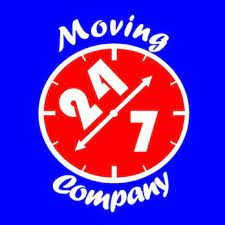
24/7 Moving and Storage
With over 252 Google review and 670 + Yelp reviews all of which averaging a 5 star average 24/7 Moving and Storage is definitely on of the top packers and movers in San Diego. Their goal is to provide professional moving services and affordable rates. The provide great customer service, affordable rates and they also offer military, student and weekday discounts which we really like. If you are looking for a top moving company in San Diego be sure to check out 24/7 Moving and Storage or give them a call on 888-296-0078.
 Dimond Movers Company
Dimond Movers Company
The Dimond Mover Company have been in business for 10+ years, which is always a sign of a great company. They are locally owned and operated and offer free estimates to all of their customers. They services all of the San Diego area and offer competitive rates. They pride themselves on being professional and providing excellent service and customer care. Check them out at Dimond Movers Company or by giving them a call on 858-768-0320
 1st Choice Movers
1st Choice Movers
1st Choice movers has over 732 reviews on Yelp and with that many reviews, averaging a 5 star rating is really impressive. They aim to provide a quality and stress-free moving experience PLUS they guarantee all of their work to meet and exceed your expectations as well as Their own. Their packing crews are highly trained moving teams, everyone at 1st Choice Movers is committed to you and getting your property moved efficiently and safely. If you are looking for a top moving company in San Diego check them out at 1st Choice Movers or by giving them a call on 714-654-5343
Packers and Movers San Diego
Aid – U Moving Company
Aid – U Moving services all of the San Diego Area. They have an amazing reputation on both Google and Yelp. Proving local, commercial, long distance and even military moving they have you covered whatever your moving needs. Check them out at Aid-U Moving or give them a call on 858-329-0900
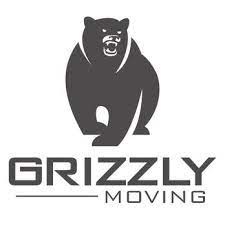
Grizzly Moving
Grizzly Moving provides comprehensive services from the moment they pull the truck up to your door to the final delivery and unpacking service at your destination.
They are able to offer both local and long-distance moving services. All of their fully trained movers can handle any job originating in this California region or providing careful transport of your belongings into the city. Grizzly Moving offer free, no obligation online quotes and guarantee your satisfaction and will do everything possible to make your moving experience smooth and stress-free. If you are looking for a top moving companies in San Diego check them out at Grizzly Moving or by giving them a call on 844-397-5806
Packers and Movers Los Angeles
Moving to a new home can be an exciting time, but it can also be stressful, especially when it comes to packing and moving all of your belongings. If you’re planning a move in the Los Angeles area, you may want to consider hiring a professional packers and movers to help make the process as smooth and easy as possible.
Packers and movers are companies that specialize in packing, transporting, and unpacking your belongings during a move. They have the experience and equipment necessary to properly pack and protect your items, ensuring that they arrive at your new home in the same condition as when they left your old home. Check out our post on How to choose the right moving company.
One of the main benefits of using a professional packer and mover is the time and effort it can save you. Packing and moving can be a very time-consuming and tiring process, especially if you have a lot of belongings. By hiring a professional, you can free up your time to focus on other aspects of your move, such as arranging for utilities to be transferred and preparing your new home.
When choosing a packer and mover, it is important to do your research and choose a reputable company with a good track record of customer satisfaction. It is also important to make sure the company is licensed and insured. This will give you peace of mind knowing that your belongings are protected in case of any damage or loss during the move.
Below is our list of the best Packers and Movers in Los Angeles
Packers and Movers Los Angeles
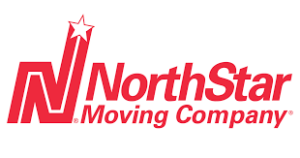
North Star Movers are one of the top packers and movers in LA. They have 724+ Google reviews with an impressive 4.9 average. They were founded in 1984 and move over 8000 clients per year. North Star can help you with local, long distance, international, commercial moves and can even offer storage services. They have a great social media presence and last year won the Woman owned business of the year. If you are researching top moving companies in LA check them out at NorthStar Moving or give them a call on 800-275-7767

Trek Movers are a top rated licensed and insured moving company in lA. They handle all kinds of budget-friendly local and long-distance moves since 2007. The company can deliver your belongings to any destination in California and nearby with care. Every single move with a Trek Movers team is supported by a dedicated project manager who assists you at every step of the relocation. There website also offers clear and upfront pricing on your move. Check them out at Trek Movers or give them a call on 800-298-0044
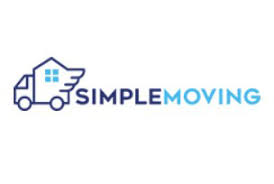
Simple Moving has professional packers and movers and their friendly crews and are fully licensed and insured. They pride themselves on having no hidden fees, extra charges or surprises. Simply moving offers additions services such as packing, unpacking, storage, crating and pianos. Another cool thing is that the offer free in person estimates for places that are 3 bedroom or more. When looking for top moving companies in LA check them out at Simple Moving or give them a call on 888-588-4118

SoS Moving is a licensed and insured company with a track record of providing outstanding local, commercial, and long-distance moves, taking off all the burdens that come with relocation, and delivering a blissful experience. They have highly skilled packers and movers, top-quality equipment, and effective workflows that focus on customer satisfaction. SoS Moving use thee best materials and techniques for packing, storage, and unpacking while keeping fragile items, doors, walls, and floors protected. When looking for top moving companies in LA check them out at SoS Moving or give them a call on 909-413-5722

Pure Moving – Many clients prefer this company because it offers affordable prices and quality services. Additionally, the company has professional packers and movers and an efficient team that offers clean work and is on time. Clients have praised Pure Moving Company as it makes the process easier by doing everything for them. The company packs goods, ensures they arrive safely and unpacks them to the client’s new house. Therefore, the clients are able to relax and be calm when moving as the company performs all the moving activities. The company has all the materials to wrap and pack the client’s properties. Therefore, the client is assured that all the items will arrive safely. Another advantage is that the clients can easily book a reservation on a particular date they want to move through the company’s website at Pure Moving
Packers and Movers Chicago
Moving to a new home can be an exciting time, but it can also be stressful, especially when it comes to packing and moving all of your belongings. If you’re planning a move in the Chicago area, you may want to consider hiring a professional packers and movers to help make the process as smooth and easy as possible.
When choosing a packer and mover, there are a few things to consider. One important factor is the company’s reputation. Look for a company with a good track record of customer satisfaction and positive reviews. Also, make sure the company is licensed, insured and bonded. This will give you peace of mind knowing that your belongings are protected in case of any damage or loss during the move.
A little about bout Chicago
Chicago is a large city located in the state of Illinois, USA. It is known for its rich history, diverse culture, architecture, and cuisine. Some famous attractions in Chicago include the Willis Tower (formerly Sears Tower), Navy Pier, the Art Institute of Chicago, and Millennium Park. Chicago is also a major hub for commerce and transportation, with a thriving economy driven by finance, technology, and healthcare industries. The city has a rich sports culture, with teams like the Chicago Cubs (baseball), the Chicago Bulls (basketball), and the Chicago Bears (football) drawing fans from all over.
Below is our list of the best Packers and Movers in Chicago
Packers and Movers Chicago

New City Moving
New City Moving Inc.’s Chicago movers are committed to providing Chicago with the very best in moving and packing services. They have proven to be one of the most trusted, punctual, & professional moving companies in Chicago and the surrounding suburbs. New City Moving have a fleet of over 70 moving trucks and over 200 moving and relocation experts ready to help you with any and all of your moving needs. If you are looking for top moving companies in Chicago check them out at New City Moving or give them a call on 1-866-481-2707
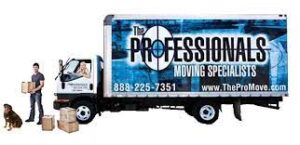 The Professionals Moving Specialists
The Professionals Moving Specialists
The Professionals Moving Specialists is a moving company in Chicago, IL providing residential and commercial moving services to their local community. They have affordable moving services designed to help make the transition from one location to another seamlessly. The company also provide storage options for their customers. This moving company also partners with Chicago Greenbox to offer reusable plastic moving boxes. If you have ever thought about using reusable plastic moving boxes check out our post on The benefits of reusable plastic moving boxes.The benefits of plastic moving boxes
 H2H Movers
H2H Movers
H2H Movers are a full service moving company offering loading and unloading, packing, commercial moves and much more. They offer transparent pricing and are competitively priced with experienced and fully trained movers. If you are researching top moving companies in Chicago check them out at H2H Movers or give them a call on 773-236-8797
Moovers Chicago
Moovers Chicago offer local, commercial and long distance moving services. They are also able to offer their customers with packing, moving and storage services. Moovers Chicago work hard to earn and maintain the trust of their clients and achieve this by treating customers fairly and delivering stress-free moves. The company also offers free estimates to all of their clients. Check them out at Moovers Chicago or give them a call on 773-474-2691

Move-Tastic
Move Tastic has 900+ reviews on Google with a 5 star average. They have highly trained moving professionals who will make your move easy, efficient, and stress-free. The company offers full moves, full packing, truck Loading and unloading, interstate moving and interbuilding moves. They pride themselves on their ability to reduce the stress of moving for every single customer. If you are looking for top moving companies in Chicago check them out at Move Tastic or give them a call on 773-715-3227
Other posts you may be interested in
How to choose a realtor to list your home
13 steps to prepare for a move out
How many boxes do I need to move
Packers and Movers San Francisco
Moving to a new home can be an exciting time, but it can also be stressful, especially when it comes to packing and moving all of your belongings. If you’re planning a move in the San Francisco area, you may want to consider hiring a professional packers and movers to help make the process as smooth and easy as possible.
Packers and movers are companies that specialize in packing, transporting, and unpacking your belongings during a move. They have the experience and equipment necessary to properly pack and protect your items, ensuring that they arrive at your new home in the same condition as when they left your old home.
When choosing a packer and mover, there are a few things to consider. One important factor is the company’s reputation. Look for a company with a good track record of customer satisfaction and positive reviews. Also, make sure the company is licensed, insured and bonded. This will give you peace of mind knowing that your belongings are protected in case of any damage or loss during the move.
Below is our list of the best Packers and Movers in San Francisco
Packers and Movers San Francisco

If you are look for packers and movers in SF then you have to check out CareMore Moving and Storage. They are fully licensed and insured and serve the whole Bay Area and California. The specialize in residential and commercial moves and they also offer storage right in the heart of SF. They offer clear upfront pricing and they are never any hidden charges. When you book a move with them you will also receive a confirmation email confirming the dates / times and all pricing so that they is never any confusion. They will also give you a call the day before the move and another when they are on their way on move day. CareMore provide free no obligation quotes which they are able to provide virtually to save you time. Check them out at CareMore Moving or give them a call on 415-822-8547.

One Big Man One Big Truck is one of the top packers and movers in SF. They cover all of the Bay Area and their website shows clear and upfront pricing. The specialize in moving apartments and can also offer office moving services. Check them out at OneBigMan or give them a call on 415-821-9697

When looking for packers and movers in SF be sure to check out Corrib Moving & Storage. Corrib has experience dealing with moves of all sizes, and they can pack up a large home or a small apartment. This licensed and insured company makes sure that the items that they move are not damaged while being moved. This company can haul a piano from one place to another, and they also take care of other items that are bulky, heavy, and difficult to move. The Corrib Moving & Storage team arrives on time and quickly handles each move they are hired to handle. Visit them at Corrib Moving or give them a call on 415-282-6683

Kora moving local moving for both residential and business customers. Their packers and movers are all experienced and will be able to handle any request you may have. They also offer piano moving and provide packing and storage services. Kora Moving provides affordably priced services and have a great team of friendly movers. When researching top moving companies in Sf be sure to check them out at Kora Moving or give them a call on 415-583-1189

Good Green Movings mission is to provide you with a safe, secure, sustainable and successful moving experience. They are able to provide packing and moving services to multiple locations all across the back area. They aim to provide a green moving experience and their website will provide you with how they aim to do this. As part of their green mission they also use reusable plastic moving boxes. Check out our post on the benefits of plastic moving boxes. They are able to help you with small and large moves, local and long distance and can also perform commercial moves. When researching top moving companies in SF check them out at Good Green Moving or give them a call on 451-966-3153
Piano Movers Denver
Piano moving can be a stressful and difficult task, especially if you’re not familiar with the process. Piano’s are not only large and heavy, but also incredibly delicate and valuable instruments. It’s essential to trust a professional piano moving company to handle the process of moving your piano, whether it’s across the street, across town or even across the country.
We have put together a list of the top 5 piano moving companies in Denver. These companies have spent years working on the art of moving pianos and they know how to handle pianos of all shapes and sizes. They have the right equipment, such as dollies, ramps, and straps to move your piano safely and efficiently. They also have the necessary knowledge to pack, secure and transport your piano to prevent any damage during the move.
Top 5 Piano Movers Denver

Pro Piano Movers
When looking for piano mover in Denver you can go wrong with Pro Piano Movers. They specialize in professional piano moving and transportation of any type of keyboards (pianos), including organs and harpsichords in Denver and throughout Colorado. The company has no problem with placing pianos upstairs and downstairs. Pro Piano movers provide internal moves, such as moving pianos within homes, churches, commercial buildings as well as loading pianos into moving trucks or pods. In addition, they offer out of state piano moves. With more than 16 years of experience moving pianos in Denver Colorado you should definitely check them out at Pro Piano Movers
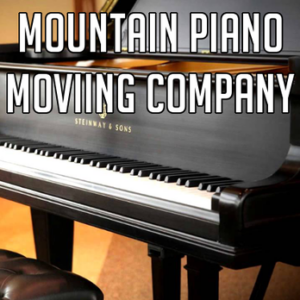 Mountain Piano Moving Company
Mountain Piano Moving Company
Mountain moving piano company take pride in all their piano moves. They are happy to service Denver and all the surrounding areas and can even move pianos out of state. They company are commited to 100% customer satisfaction with every move. One of the cool things about this company is that everyone on the team is a musician to help ensure care and quality. They use all the proper tools and do not take shortcuts when it comes to moving pianos safely. When looking for Piano movers in Denver check them out at Mountain Piano Moving Company.

Gentle Hands Moving
As a licensed and insured provider of moving and storage services, Gentle Hands Moving never makes compromises with service quality and timing. They have the tools and skills to move you piano safely and efficiently. Gentle Hands Moving LLC is not your average moving & trucking business. They are a highly experienced, and qualified business that has based all of its work on client satisfaction. Since the company started in 2010, they have made a lot of residential and commercial customers happy. Check the out at Gentle Hands Moving
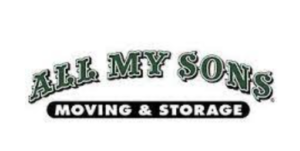
All My Sons Moving & Storage
With Amazing Google, Facebook and Yelp reviews it is hard to look past All My Sons Moving & Storage when looking for piano movers in Denver. They offer free, no obligation quotes as well as local and long distance moving. They are also able to fully pack everything you could possible think of and they have the ability to store all your items if needed. If you are looking for great piano movers in Denver visit them at All My Sons

Extreme Piano Moving
Extreme Piano Moving is a professional piano moving company that offers exceptional customer service, punctual delivery and climate-controlled storage. They handle all types of pianos and service all points in Colorado and outlying states. They are equipped to handle any job, big or small and offers it at competitive rates. Contact them for a quote and trust them to take the stress out of moving your valuable piano. Visit them at Extreme Piano Moving
Other posts that may be helpful to you
Top Moving Companies in Denver
The 5 best tool kits for moving
Best video doorbell without subscription
Piano Movers New York
Piano moving is a specialized task that requires skilled and experienced movers. Pianos are not only heavy and bulky, but they are also delicate instruments that need to be handled with care. Therefore, it’s essential to choose a reputable and experienced piano moving company in New York to ensure the safety and well-being of your piano during transport.
When looking for a piano moving company in New York, there are several things to consider. First and foremost, it’s essential to choose a company that has experience and expertise in moving pianos. They should have a team of skilled movers who are familiar with the unique characteristics of pianos and know how to properly handle and transport them.
It’s also important to choose a company that is fully licensed and insured. This will provide you with peace of mind knowing that your piano is protected against any damage or loss during transport.
Another factor to consider is the company’s reputation. You can check online reviews and ask for references to get a sense of the company’s reliability and level of service. It’s also a good idea to ask for a detailed estimate of the cost of the move, including any additional services such as packing and storage.
In New York, there are many reputable piano moving companies to choose from. You can also check out our posts on How to choose the right moving company. Below is The Guru of Moving’s list of the top piano movers in New York.
Top 5 Piano Movers New York
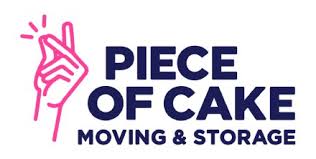
Piece of Cake Moving & Storage
When looking for piano movers in New York be sure to check out these guys. They are experienced in moving every type of piano in short, tri-state and long distance moves, from 350-pound slim uprights to 1200-pound Grands: Piece of Cake moving are capable of moving all types of pianos.Upright Pianos: Spinet, Console, Studio and Classic Uprights & Horizontal and Grand Pianos: Petite Grand, Baby Grand, Parlour Grand, Semi-Concert/Ballroom and Concert Grand. Give them a call or get a free quote by visiting Piece of Cake Piano Moving

Dumbo Moving & Storage
Moving a piano has never been easier with Dumbo Moving and Storage. The experts from Dumbo Moving and Storage will make sure to handle your piano relocation in the most professional manner. Their moving company is there to handle all the preparations and loading of your piano. Instead of worrying and getting injured, you should consider giving them a call or check them out at Dumbo Moving

Magic Piano Movers
The company is comprised of professionals with 10 years of experience. They are fully licensed and insured and their piano moving equipment is specifically designed to do the one job- move pianos. There isn’t a situation that they are not prepared for. They can move a piano up and down flights of stairs or anywhere you need them to. There is nothing that their equipment and their people can’t handle or haven’t been trained on. Check them out at Magic Piano Movers
 RedLine Moving & Storage
RedLine Moving & Storage
Their nyc movers have the training and the experience to handle any size piano be it an upright piano or a concert grand. Redline movers understand the value of these masterful instruments and the delicate nature involved with moving them and that’s why with their nyc professional movers you can feel at ease when you entrust Redline Moving. Check them out at RedLine Piano Moving

JP Urban Moving
As piano movers they have successfully moved hundreds of upright and grand pianos over the years for professionals and amateurs, families and concert halls. Their 5-Star Yelp reviews, A+ BBB rating and recognition in NY Magazine speak to the top shelf service they provide to all of there customers. Check them out on JP Urban Moving
Other posts that may be helpful to you
Who regulates moving companies in New York
Where to donate food in NYC when moving
How to schedule a free donation pick up in NYC
Where to get moving supplies in New York
In today’s world, security is more important than ever. A video doorbell is a great way to keep an eye on your home, even when you’re not there. These devices allow you to see who is at your door, even when you’re not home, by connecting to your smartphone or other smart devices. Additionally, video doorbells can act as a deterrent against potential burglars, as they allow you to see and speak to visitors before opening the door. The problem is that many video doorbells require a monthly subscription to access all of their features, which can be costly over time. In this blog post, we will be discussing the 5 best video doorbells without a subscription, detailing the benefits of each one, so you can make an informed decision when choosing the best video doorbell for your home. Also check out out top 10 essentials for your new apartment.
Best video doorbell without subscription
eufy security, Wi-Fi Video Doorbell, HD 1080p-Grade
- HD 1080p-grade resolution allows you to see visitors in clear detail
- No monthly fee, saving you the cost of a subscription
- Local storage allows you to save recorded footage on the device
- Human detection minimizes false alerts
- Comes with a wireless chime, which allows you to hear the doorbell ring even when your phone is on silent. Buy Here
Cree Connected Max Smart Video Doorbell, 1080P HD

- SMART VIDEO DOORBELL: See who is at the door from anywhere. Use the Cree Lighting App to see visitors, get real-time alerts when motion is detected, and keep an eye on your home — no matter where you are
- SIMPLE SET UP: Easily set up your new device with fast pairing to Bluetooth and WiFi. No hub required.
- REAL-TIME NOTIFICATIONS: Receive up-to-date notifications with the device’s motion and sound detection capabilities
- CONTROL FROM ANYWHERE: Manage and monitor your devices from anywhere using the Cree Lighting App. Control devices and set schedules on one app to manage your smart home
- PRODUCT DETAILS: 1080P HD video capability | Night vision: 30 feet | Field of View: 145° | Snapshot photos, motion, & sound detection features | 24-7 Recording requires optional microSD card (sold separately). BUY HERE
AOSU 5MP Video Doorbell

The AOSU Doorbell Camera Wireless is a great option for those looking to add an extra layer of security to their home. Some benefits of using this doorbell camera include:
- 5MP Ultra HD video: The camera captures clear, high-resolution video, making it easy to identify people and packages.
- Wireless design: The camera is wireless, making it easy to install and set up.
- Night vision: The camera has built-in infrared night vision, allowing you to see clearly even in low-light conditions.
- Two-way audio: The camera has a built-in microphone and speaker, allowing you to have conversations with visitors at your door.
- Smart notifications: The camera sends push notifications to your smartphone when it detects motion, so you can see who is at your door even when you’re not home.
- Remote access: You can view live video and talk to visitors from your smartphone, tablet or computer.
- Durable and weatherproof: The camera is designed to withstand harsh weather conditions, making it suitable for outdoor use. BUY HERE
Ring Video Doorbell – 1080p HD video

- 1080p HD video doorbell with enhanced features that let you see, hear, and speak to anyone from your phone, tablet, or PC.
- An update from the original Ring Video Doorbell, enjoy improved motion detection, privacy zones and audio privacy, and crisper night vision.
- Receive mobile notifications when anyone presses your doorbell or triggers your built-in motion sensors.
- Powered by the built-in rechargeable battery or connects to existing doorbell wires for constant power.
- Easily setup by connecting your Ring Video Doorbell to wifi through the Ring app and mounting with the included tools.
- With a Ring Protect Plan (subscription sold separately), record all your videos, review what you missed for up to 180 days, and share videos and photos.
- Pair with select Alexa-enabled devices to enable announcements and two-way talk for convenient in-home monitoring. With a Ring Protect plan (subscription sold separately), Alexa can also make voice announcements and automatically show live video feed on an Echo Show, Fire TV, or Fire Tablet when your Ring doorbell detects a person or package. BUY HERE
XTU WiFi Video Doorbell Camera
The XTU WiFi Video Doorbell Camera is a great option for those looking for a high-quality, easy-to-use video doorbell camera. Some benefits of using this doorbell camera include:
- 100% Wireless & Rechargeable Battery : The installation and connection of video doorbell camera are 100% wireless, makes you enjoy the convenience of not have to deal with any outlets or tangled mess of wires. Doorbell camera built-in rechargeable batteries and connects with 2.4GHz WiFi(Not support 5GHz WiFi), getting the instant battery situation via your phone APP.
- Easy Installation & IP65 Waterproof : Following the user guide, you can quickly install video doorbell camera within 5 minutes without having to use any complicated tools. Download CloudEdge App on Google Play/App Store, friendly App operation can help you use it quickly. In addition, video doorbell is designed with high-quality material covering and IP65 waterproof. It is safe to be used in all weather conditions.
- Motion Detection & 2-Way Audio : Wireless video doorbell camera built-in PIR Sensor that allows you to receive alarm and push notifications in real-time upon any triggered human detection. It helps you maintain safety by viewing whoever is at your door without opening it. The camera provides two-way audio talk all the time. You will have a real-time video talk with whoever in front of the camera on any situation.
- 1080P Full HD & Night Vision : 2021 Upgraded home security doorbell with camera can clearly monitor your house with Full HD 1920 X 1080 Megapixel and 166°wide view angle video through infrared night vision and live view, which can be used during the day and night.
- No Monthly Fee & Warm Support : WiFi smart video doorbell with camera supports up to 128G Micro SD(32GB SD card included) storage and Cloud storage. This is a ideal choice If you don’t want to pay the endless monthly subscription fee. In addition, If you encounter any problem or need support, their professional support team will always stand by your side and be ready to help you! BUY HERE
When choosing a video doorbell, consider your specific needs and preferences. It’s important to pick a doorbell that fits your budget and offers the features that you need. With the above-mentioned options, you can be sure that you’re getting a high-quality video doorbell without the added cost of a subscription.
Moving Scams – What to do if you’ve been the victim of a moving Scam
Unfortunately not all moving companies are honest and reliable and 1000’s of people fall victim to moving scams each year. There are many types of moving scams but the most common type of moving scam is known as a bait and switch and is described by the Better Business Bureau as “Consumers and the moving company agree on a price to move personal belongings. At the end of the move, the movers demand extra fees and hold the belongings hostage unless the fees are paid.”
If you have been a victim of a moving scam there is hope. Whatever type of moving scam you have been a victim of we have put together a list of people and places that you can contact that will help to resolve your moving scam and help to make sure you can get it resolved and that it doesn’t happen to anyone else. Whatever one of our options you decide to pursue we strongly advise to always keep a record of any communications or complaints that you have made as these will help your case going forward. There are a number of options available to you to help you file a complaint against the moving company and help you get the issue resolved. Before choosing a mover however we always recommend reading our post on How to choose the right moving company to help you avoid scams and bad moving companies.
How to report a moving scam
Resolve the issue by communicating with the moving company
This is the solution that we always recommend trying first. Simply give the moving company a call and calmly try and resolve the issue. A lot of times it may have just been due to a miss communication between you and the moving company. If they are a honest company they will be happy to work with you to resolve the situation. If a solution cannot be reached this way it may be time to take further action.
Report them to the Better Business Bureau
You can file a complaint against a moving company with the Better Business Bureau through their Online Complaint System, or you can also visit their nearest office. It will really help if your moving company is BBB Accredited as it will set the claim process in motion much quicker. Within two days, BBB will contact your moving company about your pending claim, at which time the company will have 14 days to reply. If there is no response within this 14-day period, a second request is sent to the company from the BBB. You will be informed of the status of your claim as the information becomes available – most of the time, moving complaints close these disputes within 30 days.
Check out MoveRescue
Move Rescue is a consumer assistance service aimed at stopping disreputable and unscrupulous interstate movers. It’s backed by a network of U.S. law firms. Their service offers legal advice and general guidance to people who’ve been victims of hostage scams and other moving frauds. They provide consumer advocates and legal services at no cost to callers. Visit them at MovingRescue.com or give them a call on 800-832-1773
Report them to your local moving authority
All states have a organization that are responsible for regulating household movers that operate within that State. Contacting them may result in an investigation being launched which may result in the local authorities getting involved.
Submit a complaint to the AMSA
The American Moving & Storage Association (AMSA) is the non-profit trade association representing members of the professional moving industry. It will help your complaint if your mover is part of the AMSA. You can find out if they are by calling 703-683-7410 or by sending them an email to info@moving.org There is no cost to you for processing a complaint through this AMSA program. They act as a clearinghouse for matters relating to consumer complaints, information and arbitration. AMSA is not a governmental agency and they do not have the authority to order your mover to provide refunds or reimbursements, force a settlement or to demand any type of compensatory payment from your mover, however, they do routinely remove movers from their membership that show a repeated pattern of consumer abuse.
Review them on Yelp
Our advice before writing a review is to first of all let the company know that you plan to do so. If they are a reputable company they will not want a bad review and should work with you to resolve the matter. If however they still show no intention of doing the right thing then a review on Yelp will at least help to make sure that the same thing doesn’t happen to anyone else.
Submit a complaint to the FMCSA
You can file your complaint to the FMCSA by visiting the FMCSA Consumer Website. Although they do have limited resources, it is still a good idea to file your complaint with them. If enough people file a complaint there will be more chance of them taking action against a specific carrier.
Best tape for moving boxes
Packing up your belongings and preparing for a move can be a stressful and time-consuming process. One of the key elements to a successful move is the use of the right type of tape to seal your moving boxes. Choosing the wrong type of tape can result in boxes coming open during the move, leading to damage to your items and even loss. It is also a good idea to use a tape dispenser to apply the tape, as this will make the process faster and easier, and will also help to ensure that the tape is applied evenly and securely.
In this post, we will explore the different types of tape available and provide guidance on the best tape to use when packing boxes for a move.
Best tape for moving boxes
Heavy Duty Packing Tape #1
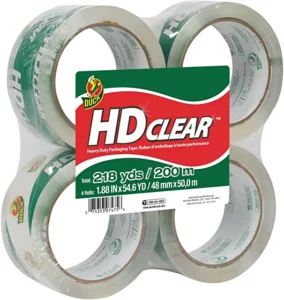 Heavy-duty shipping tape, also known as box sealing tape or filament tape, is a good option for taping boxes because it is designed specifically for the purpose of sealing boxes. This type of tape is much stronger than standard clear packaging tape and is able to withstand the rigors of the shipping process, including being stacked and transported on pallets.
Heavy-duty shipping tape, also known as box sealing tape or filament tape, is a good option for taping boxes because it is designed specifically for the purpose of sealing boxes. This type of tape is much stronger than standard clear packaging tape and is able to withstand the rigors of the shipping process, including being stacked and transported on pallets.
Heavy-duty shipping tape is also resistant to temperature changes and moisture, which makes it ideal for use in boxes that will be shipped in different weather conditions. It is also easy to apply, using a tape dispenser, and creates a strong and secure seal on the box. In general, it is best to use heavy-duty shipping tape when taping boxes for shipping to ensure that the boxes are securely sealed and will not come open during transportation. This will help to protect the contents of the boxes and ensure that they arrive at their destination in good condition.
Brown Acrylic Packing Tape #2
 Acrylic tape, also known as acrylic adhesive tape or pressure sensitive tape, is a good option for a variety of applications because it is strong, durable, and has excellent adhesive properties. This type of tape is made from a clear, acrylic adhesive that is applied to a backing material, such as paper, plastic, or fabric.
Acrylic tape, also known as acrylic adhesive tape or pressure sensitive tape, is a good option for a variety of applications because it is strong, durable, and has excellent adhesive properties. This type of tape is made from a clear, acrylic adhesive that is applied to a backing material, such as paper, plastic, or fabric.
One of the main benefits of using acrylic tape is its strong adhesive properties, which allow it to stick firmly to a wide range of surfaces. It is also resistant to temperature changes and UV light, which makes it a good choice for use in outdoor or long-term applications.
Another benefit of acrylic tape is that it is easy to apply using a tape dispenser, and can be easily torn by hand. Check out our how to video on How to load a tape gun. It is also resistant to moisture, making it a good choice for use in damp or humid environments.
Overall, acrylic tape is a strong and durable option for a variety of applications, and is a good choice for those who need a tape with excellent adhesive properties.
Strapping Tape #3
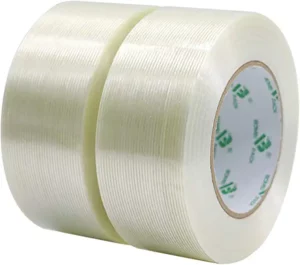 This type of tape is made from a strong, synthetic material, such as polypropylene or fiberglass, and is reinforced with strands of filament to provide added strength.
This type of tape is made from a strong, synthetic material, such as polypropylene or fiberglass, and is reinforced with strands of filament to provide added strength.
One of the main benefits of using strapping tape for taping moving boxes is its strength and durability. It is able to withstand being stacked and transported in a moving truck, and is resistant to temperature changes and moisture, making it ideal for use in moving boxes that will be transported in different weather conditions.
Another benefit of strapping tape is that it is easy to apply, using a tape dispenser, and creates a strong and secure seal on the box. It is also resistant to tearing, which helps to prevent boxes from coming open during the moving process. Overall, strapping tape is a strong and durable option for taping moving boxes, and is a good choice for those who need a tape that will hold up during the moving process.
Tapes to avoid using on your moving boxes
There are a few types of tape that are not well-suited for taping moving boxes. These include masking tape, duct tape, and scotch tape.
Masking Tape
Masking tape is not strong or sticky enough to keep boxes closed during a move or in storage. It is typically used for temporary applications and is not meant to be used for securing heavy items.
Duct Tape
Duct tape is not a good choice for moving boxes because it does not adhere well to cardboard. It also tends to leave a sticky residue on other surfaces, which can be difficult to remove. Additionally, it is relatively expensive compared to other types of tape.
Scotch Tape
Scotch tape is also not a good choice for securing boxes because it lacks sufficient adhesive strength. It is not designed to hold up under heavy loads or to be used for long periods of time. It is better suited for temporary or lightweight applications.
In general, it is important to choose a tape with a strong adhesive and good tensile strength for taping moving boxes. This will ensure that your boxes stay sealed and your belongings stay secure during a move. Be sure to check out out videos on How to load a tape gun and How to tape a moving box.
Who regulates New York moving companies?
Moving can be a stressful and chaotic experience, especially if you’re not sure who to trust with your belongings. This is why it’s important to know who regulates moving companies New York moving companies and what measures are in place to ensure the safety of customers. In this post we will explain who regulates moving companies in New York and everything they do to protect consumers.
The New York State Department of Transportation (NYSDOT) is responsible for regulating moving companies in New York. They are charged with enforcing rules and regulations that protect consumers and ensure that moving companies operate safely and ethically. This includes issuing licenses, conducting inspections, and handling complaints and violations.
When it comes to issuing licenses, the NYSDOT requires moving companies to meet certain criteria in order to operate legally in the state. This includes having proper insurance coverage, maintaining adequate equipment, and following all federal and state regulations related to transportation. The NYSDOT also has the authority to revoke or suspend a moving company’s license if it is found to be in violation of any rules or regulations.
Conducting inspections is another important function of the NYSDOT. These inspections are designed to ensure that moving companies are operating safely and in compliance with all applicable laws and regulations. This may include checking equipment and vehicles for proper maintenance and safety features, reviewing documentation, and observing the company’s operations to ensure compliance with industry standards.
The NYSDOT also handles complaints and violations from consumers. If you have a complaint about a moving company, you can file it with the NYSDOT, and they will investigate the matter and take appropriate action. This may include issuing fines, requiring the company to make changes to its operations, or revoking its license if the violation is serious enough.
Overall, the NYSDOT plays a critical role in regulating moving companies in New York and helping to protect consumers from fraudulent or unethical practices.
What other organizations provide oversight?
In addition to these regulatory measures, there are also several industry organizations and third-party rating agencies that provide additional oversight and offer resources for consumers. The American Moving and Storage Association (AMSA) is a national trade organization that represents the interests of the moving industry, while the Better Business Bureau (BBB) is a nonprofit organization that aims to promote ethical business practices and resolve disputes between consumers and businesses.
In summary, there are several entities that regulate moving companies in New York and work to protect consumers. These include the NYSDOT, AMSA, and BBB. It’s important for consumers to familiarize themselves with these resources and use them to make informed decisions when choosing a moving company. If you need more help and advise check out our posts on How to choose the right moving company and also check out our list on The top moving companies in NYC
Who regulates moving companies in Florida?
Wondering who regulates moving companies in Florida? In Florida, the regulation of moving companies is primarily handled by the Florida Department of Agriculture and Consumer Services (FDACS). The FDACS oversees the licensing and regulation of moving companies through its Division of Consumer Services. They enforce the Florida Intrastate Moving Services Act, which applies to moving companies operating within the state. operate.
Moving companies that offer interstate services must comply with FMCSA regulations, ensuring they possess the necessary authority and meet specific safety standards. The FMCSA maintains a comprehensive database called the “Protect Your Move” program, which allows consumers to verify a moving company’s license, insurance, and complaint history. This valuable resource empowers individuals to make informed decisions and safeguard themselves against potential scams or unscrupulous practices during interstate moves. When choosing a moving company check out out post on How to choose the right moving company.
How does the FDACS regulate moving companies?
The Florida Department of Agriculture and Consumer Services (FDACS) regulates moving companies in Florida through its Division of Consumer Services. The FDACS implements various measures to ensure that moving companies comply with regulations and provide reliable services to consumers. Here are some key ways in which the FDACS regulates moving companies:
- Licensing: The FDACS requires moving companies to obtain a license before operating within Florida. To obtain a license, companies must meet specific criteria, such as demonstrating financial responsibility, providing proof of insurance coverage, and complying with safety standards. The licensing process aims to ensure that only reputable and qualified moving companies are authorized to offer services.
- Compliance Monitoring: The FDACS conducts regular monitoring and inspections of licensed moving companies to ensure compliance with regulations. This includes verifying that companies maintain their insurance coverage, adhere to safety standards, and operate within the confines of the law. Through proactive monitoring, the FDACS seeks to prevent fraudulent activities and protect consumers from unscrupulous practices.
- Consumer Complaint Resolution: The FDACS serves as a resource for consumers who encounter issues or disputes with moving companies. Individuals can file complaints with the Division of Consumer Services, and the FDACS investigates these complaints to determine if any violations have occurred. If a moving company is found to have engaged in fraudulent practices, violated regulations, or provided substandard services, the FDACS takes appropriate actions, which may include fines, license suspension, or revocation.
- Education and Awareness: The FDACS plays a vital role in educating consumers about their rights and responsibilities when hiring a moving company. They provide information and resources on their website, conduct outreach programs, and distribute educational materials to raise awareness about potential scams, fraudulent practices, and how to choose reputable moving companies. By promoting consumer education, the FDACS empowers individuals to make informed decisions and avoid becoming victims of moving-related fraud.
- Regulation Enforcement: The FDACS actively enforces the Florida Intrastate Moving Services Act, which governs the operations of moving companies within the state. They work in collaboration with law enforcement agencies to take legal action against companies that engage in unlawful activities, defraud consumers, or violate regulations. Through regulatory enforcement, the FDACS seeks to maintain a fair and transparent moving industry in Florida.
How can you check if a Florida moving company is regulated?
- Verify the FDACS License: Visit the Florida Department of Agriculture and Consumer Services (FDACS) website and navigate to their “Licensee Search” or “Verify a License” section. Enter the name or license number of the moving company to check if they are licensed and regulated by the FDACS. The search results will provide information about the company’s license status, expiration date, and any disciplinary actions taken against them.
- Check FMCSA Registration: If you are planning an interstate move, visit the Federal Motor Carrier Safety Administration (FMCSA) website and access their “Search Movers & Complaint History” tool. Enter the company’s USDOT number or name to verify their registration with the FMCSA. This search will provide details about the company’s operating status, complaint history, safety rating, and any enforcement actions taken against them.
- Review Consumer Complaints: Check online platforms such as the Better Business Bureau (BBB), Yelp, or Google Reviews for customer feedback and complaints about the moving company. While individual reviews should be taken with a grain of salt, patterns of consistently negative or concerning reviews may indicate potential issues with the company.
- Seek Recommendations: Ask for recommendations from friends, family, or colleagues who have recently moved. Personal experiences and referrals can help identify reliable and reputable moving companies.
- Research Credentials and Insurance: A regulated moving company should provide their license number, proof of insurance coverage, and other credentials upon request. Ensure that the company has adequate insurance coverage to protect your belongings during the move.
- Consult Professional Associations: Some reputable moving companies are members of professional organizations such as the American Moving and Storage Association (AMSA) or state-level moving associations. Membership in these associations can indicate a commitment to industry standards and professionalism.
By following these steps and conducting thorough research, individuals can verify if a moving company is regulated, licensed, and meets the necessary requirements to provide reliable moving services. Taking the time to check these details can help ensure a smooth and stress-free moving experience.
Conclusion
In conclusion, when it comes to the regulation of moving companies in Florida, the Florida Department of Agriculture and Consumer Services (FDACS) takes the lead for intrastate moves, while the Federal Motor Carrier Safety Administration (FMCSA) governs interstate moves. By working in tandem, these regulatory bodies strive to ensure the integrity and reliability of moving services provided within the state.
When planning a move, it’s crucial to conduct thorough research, read customer reviews, and obtain multiple quotes from licensed and reputable moving companies. Utilize the resources provided by the FDACS and FMCSA to verify a company’s credentials, licenses, and complaint history. By doing so, you can rest assured that your move will be handled by professionals who adhere to regulations, prioritize your safety, and deliver a seamless and stress-free experience.
Remember, knowledge is your greatest ally in navigating the moving industry, and being aware of the regulatory bodies overseeing moving companies in Florida is a significant step toward a successful relocation.
Who regulates moving companies in California?
So you are moving and you are wondering who regulates moving companies in California. In California, moving companies are regulated by The Bureau of Household Goods and Services (BHGS). The BHGS is a state agency that is responsible for regulating various industries, including the moving industry, in order to protect consumers and ensure fair and safe business practices.
In the United States, moving companies are regulated by the Federal Motor Carrier Safety Administration (FMCSA), which is an agency of the Department of Transportation. The FMCSA sets safety regulations for interstate moving companies and also has jurisdiction over the licensing and registration of these companies. In addition to the FMCSA, moving companies may also be regulated by the state in which they operate.
How does the BHGS regulate moving companies?
The the Bureau of Household Goods and Services (BHGS) is responsible for regulating the moving industry in California. It does this by setting standards for the operation of moving companies, issuing licenses to companies that meet these standards, and enforcing compliance with state and federal laws and regulations.
Some of the specific ways in which the BHGS regulates moving companies in California include:
- Requiring moving companies to be licensed: In order to operate legally in California, moving companies must obtain a license from the BHGS. This involves submitting an application, paying a fee, and meeting certain requirements, such as having liability insurance and a surety bond.
- Setting rates and fees: The BHGS has authority to set maximum rates and fees that moving companies can charge for their services. This helps to protect consumers from being overcharged.
- Enforcing consumer protection laws: The BHGS is responsible for enforcing state and federal laws that protect consumers from deceptive or unfair business practices by moving companies. This includes laws that prohibit false or misleading advertising, require companies to provide written estimates, and mandate that companies follow certain procedures when handling customer complaints.
- Conducting inspections and investigations: The BHGS has the authority to inspect moving companies and investigate complaints about their operations. If a company is found to be in violation of state or federal laws or regulations, the BHGS can take enforcement action, such as issuing fines or revoking a company’s license.
How can you check if a California moving company is regulated?
There are a few steps you can take to check if a moving company in California is regulated by The Bureau of Household Goods and Services (BHGS).
- Check the company’s website: Many moving companies will list their BHGS / PUC license number on their website. You can then verify this license by visiting the BHGS website and searching for the company by name or license number.
- Contact the BHGS: You can call or email the BHGS’s Consumer Affairs Branch to ask if a specific moving company is licensed by the agency. You can also use the BHGS’s online complaint form to file a complaint against a moving company if you believe it is operating without a license or is engaging in deceptive or unfair business practices.
- Check with the Federal Motor Carrier Safety Administration (FMCSA): Moving companies that operate across state lines are also regulated by the FMCSA, which is an agency of the Department of Transportation. You can use the FMCSA’s online search tool to check if a moving company is registered with the agency.
It’s important to note that even if a moving company is licensed and regulated by the BHGS, this does not guarantee that it will provide good service. It’s always a good idea to research a company thoroughly before hiring it, including by reading online reviews and getting estimates from multiple companies. Check out our post on How to choose the right moving company.
How to choose the right realtor to list your house.
When it comes to buying or selling a home, choosing a good realtor can make all the difference when buying or selling a home. This blog post will so you how to choose the right realtor to list your house. First and foremost, a good realtor can save you time and effort by handling many of the tasks involved in the buying or selling process, such as scheduling showings, negotiating offers, and preparing documents. Additionally, they will have a thorough understanding of the local real estate market and will be able to help you get the best price for your home or secure the best deal when buying. A good realtor can also offer valuable advice and guidance throughout the process, helping you make informed decisions and navigate any challenges that may arise. Finally, they can help you avoid costly mistakes and protect your interests to ensure that the transaction goes smoothly. In this blog post, we will explore the importance of choosing a good realtor and how to go about finding one.
How to choose a realtor to list your house
- Ask for referrals from friends, family, or colleagues who have recently bought or sold a home in the area. This is one of the best ways to help you choose a great realtor. People’s experience with a realtor is a great indication of what working with them will be like.
- Look for a realtor with a strong track record of successful sales in your area. To do this you can ask the realtor directly. Most realtors will be happy to provide you with information about their sales history and successes. Check online resources. Websites like Zillow and Realtor.com often have information about a realtor’s sales history and performance. Check with the local real estate board: Many local real estate boards maintain records of a realtor’s sales activity. You can often find this information on the board’s website or by contacting them directly. You can also ask for references: A top realtor should be able to provide you with a list of references from past clients who can speak to their experience working with the realtor.
- Choose a realtor who is knowledgeable about the neighborhoods and local market conditions in your area. A good realtor should be familiar with the various neighborhoods in your area and be able to provide you with information about local market conditions and trends.
- Look for a realtor who is professional, responsive, and communicates well. To do this you could meet with the realtor in person. Schedule a consultation with the realtor to get a better sense of their communication style and how well they listen to your needs. Observe how the realtor handles your initial inquiries: Pay attention to how quickly the realtor responds to your emails or phone calls, and whether they are able to answer your questions in a satisfactory manner.
- Consider working with a realtor who is affiliated with a reputable brokerage. Reputable brokerages have strict hiring standards: Real estate brokerages that have a good reputation are often selective about the agents they hire. This means that the realtors affiliated with these brokerages are likely to be highly qualified and experienced. They may also may have more negotiating power: Real estate brokerages that have a strong reputation may have more negotiating power when it comes to securing a deal on your behalf.
- Check their credentials: Look for realtors who have earned professional designations, such as the Certified Residential Specialist (CRS) or the Accredited Buyer’s Representative (ABR). These designations demonstrate a high level of experience and expertise in the field.
- Check online reviews: Look for reviews and ratings on the realtor’s website, as well as on third-party sites such as Yelp and Zillow.
- Ask for references: A top realtor should be able to provide you with a list of references from past clients who can speak to their experience working with the realtor.
- Ask about their marketing strategy: A good realtor will have a well-thought-out plan for marketing your property to potential buyers.
- Look for a realtor who is a good fit for you: It’s important to find a realtor who you feel comfortable working with and who you feel understands your needs and goals.
Follow these 10 tips and you will be well on your way to choosing the right realtor to list your house. The next step will be choosing the right mover. For help with this check out How to choose the right mover.
How to update your driver’s license and registration after moving to a new state
To update your driver’s license and registration after moving to a new state, you will need to visit a department of motor vehicles (DMV) office in your new state. You will need to bring certain documents with you, such as proof of your identity, proof of your social security number, and proof of your new address. You may also need to pass a vision test and possibly a written or road test, depending on the laws of your new state.
To update your driver’s license, you will need to surrender your old license and apply for a new one. You may be required to pay a fee for the new license.
To update your vehicle registration, you will need to bring proof of ownership, such as the title or registration from your previous state. You may also need to pay a fee to register your vehicle in your new state.
It is a good idea to check the specific requirements of your new state before visiting the DMV to ensure that you have all of the necessary documents and information.
If you are moving out of state you may also want to think about forwarding your mail.
How to forward your mail
To forward your mail to a new address, you can request a mail forwarding service from the United States Postal Service (USPS). Here is how to do it:
- Go to the USPS website and click on the “Change of Address” link.
- Follow the prompts to complete the online change of address form. You will need to provide your name, old address, new address, and the date when you want the mail forwarding to start.
- Pay the required fee, which is currently $1.05 for a change of address that lasts up to six months.
- Submit the form and wait for your mail forwarding to begin. You should start receiving your mail at your new address within 7-10 business days.
Alternatively, you can also visit your local post office and fill out a change of address form in person. You will need to provide identification, such as a driver’s license or passport, and pay the fee.
It is important to note that the USPS mail forwarding service only forwards first-class mail, including letters, bills, and small packages. It does not forward magazines, newspapers, or packages weighing more than 16 ounces.
How to prepare for a move out
When it comes to moving out of your current place it is no surprise that there is a lot to prepare and get ready for. Knowing how to prepare for a move out will ensure that everything goes well on move day and will also help to ensure that you don’t end up going crazy due to all the stress. With this in mind we have put together a list of 11 steps that will help you to prepare for a move out. There will always be other things to do when preparing for a move but if you follow our 11 steps you will be in a good place and ready for your move out.
13 Steps on how to prepare for a move out
- Make a checklist Create a checklist of all the tasks you need to complete before the move, and cross them off as you go. This will help you stay organized and on track.
- Create a moving budget: Determine how much money you have available for the move and make a budget for all the expenses involved, including hiring a moving company, renting a truck, and packing materials.
- Hire a moving company: Consider hiring a professional moving company to help with the heavy lifting and transportation of your belongings. Get estimates from several companies and choose one that fits your budget and needs. Check out our post on How to choose the right moving company.
- Start packing early: Begin packing as soon as possible, starting with items you use less frequently. Use sturdy boxes and wrap items in bubble wrap or packing paper to protect them during the move.
- Disassemble furniture: Take apart any large furniture items that can be disassembled, such as beds and tables. This will make them easier to move and also help protect them during the move.
- Take an inventory: Make a list of all your belongings, including serial numbers and descriptions of valuable items. This can be helpful for insurance purposes in case any items are lost or damaged during the move.Label boxes: Clearly label each box with its contents and the room it belongs in at the new residence. This will make it easier to unpack and get settled in your new home
- Collect important documents: Gather important documents, such as birth certificates, passports, and insurance papers, and keep them in a safe place where you can easily access them during the move.
- Have a garage sale: Consider having a garage sale to get rid of items you no longer need or want. This can help reduce the amount of stuff you have to move and also bring in some extra money.
- Arrange for childcare: If you have children, make arrangements for childcare on the day of the move. This will allow you to focus on the task at hand and not have to worry about your children’s safety.
- Set up utilities: Arrange to have your utilities turned off at your current residence and set up at your new one.
- Change your address: Notify the post office of your change of address, and make sure to update your address with any subscriptions, banks, and other institutions.
- Make travel arrangements: If you are moving a long distance, make arrangements for transportation for yourself and any pets you may have.
- Hire a cleaner -Consider hiring a cleaning service to clean your old home when you move out. When you complete your move the last thing you want to do is to have to keep going back to your old home to clean it. Hiring a cleaning service will also help to make sure you get your deposit back from your landlord.
Where to get free moving boxes – 10 places to find free moving boxes
If you are moving soon, you are probable thinking, where can I get free moving boxes near me? It’s understandable. Moving can be really expensive so anyway that you can save some money is definitely worth looking into.
Thankfully, there are ways to avoid spending big bucks on moving boxes. Finding free moving supplies near you from various stores, online marketplaces and community groups, could save hundreds of dollars on moving expenses. With the exception of a few specialty boxes designed to fit certain TVs and mirrors, you could potentially move your entire home using free boxes.
How much do moving boxes cost?
- Small moving boxes: $1 to $2.50 each
- Medium moving boxes: $2. to $3.50 each
- Large moving boxes: $3 to $4.50 each
- Extra-large moving boxes: $4 – $6 each
- Wardrobe moving boxes: $10 each to $20 each
- Picture boxes: $5 – $10 each

How many boxes do I need to move?
Deciding how many boxes you will need for your move will always depend on a number of factors. Size of place, how many people are living there and if you are a minimalist or not. For a detailed guide on how many boxes you will need for your move. Check out our post on How many boxes do I need for my move. Below we have come up with a guide on how many boxes you will need based on the square footage of your home.
400-700 square feet
- 7-15 small boxes
- 9-15 medium boxes
- 6 large boxes
- 3 extra-large boxes
Get moving kits delivered to your front door.
700-1250 square feet
- 17-23 small boxes
- 15-22 medium boxes
- 7-11 large boxes
- 4-6 extra-large boxes
Get moving kits delivered to your front door.
1200-1700 square feet
- 32-37 small boxes
- 25-35 medium boxes
- 16-20 large boxes
- 10-12 extra-large boxes
Get moving kits delivered to your front door.
1700-2200 square feet
- 38-42 small boxes
- 36-47 medium boxes
- 21-26 large boxes
- 13-15 extra-large boxes
Get moving kits delivered to your front door.
Where to find free moving boxes – 10 places to find free moving boxes
Craigslist – We couldn’t write about places to pick up free boxes without mentioning Craiglist. This site is amazing for not only being able to pick up all sorts of free stuff but also for you to be able and give away all them items you do not want to move to your new home. If you navigate to the free section of Craigslist you will come across lots of people giving away free moving boxes and packing materials. Typically these boxes have only been used once and when you are done with your move you can them give them away for free on Craigslist too.
Next Door – This is one of our favorite places to pick up free moving boxes. If you haven’t joined NextDoor.com yet you should definitely consider it. NextDoor is like you local neighborhood website. It keeps you up to date on local services, announcements, new businesses and everything else that is going on it your neighborhood. It also has a great classified section where you can buy and sell all sorts of items. In the classified section you will also see a free section where you can pick up free moving boxes and supplies. The great thing is, there are all in your local neighborhood, so you wont have far to travel to pick them up
U Haul Box Exchange – The U Haul Box Exchanged program is a great service offered by U Haul. You simply enter your location and a keyword such as “boxes” and you will be presented with a list of people in your area offering up their old moving supplies. As with all these places that allow you to pick up free boxes for moving. It also benefits the environment by keeping moving supplies out of the landfills
FaceBook Market Place – Facebook market place is great for buying and selling anything that you can think of, but it is also great for finding free moving boxes. Navigate your way to the free section and you will find plenty of people who are offering their old moving boxes for free. The great thing about market place is that you can also pick up anything else you need for packing for free. Tape, paper, sharpies. You name it there is a good chance you can get it for free here.
Offer Up – Offer Up allows you to instantly connect with local buyers and sellers. What we really like about offer Up is that it offers mobile friendly apps. which makes searching for free moving boxes super easy and it also has user profiles with ratings so you have a better idea of the person you are dealing with.
The Freecycle Network – This is a grassroots & entirely nonprofit movement of people who are giving and getting stuff for free in their own Towns. It’s all about reuse and keeping good stuff out of landfills. Membership is free. And now you can also set up your own, smaller personal Friends Circle for gifting and lending of items with just your friends. A great place to pick up free boxes when moving.
Recycling Drop Off Locations – There may be no better place to get free moving boxes. It’s almost like the free moving boxes honey hole. Pop down to you local recycling center and as long as there are in good condition. You should be able to get as many free moving boxes as you need for your move.
Retail Shops and businesses – Your local stores are great resources for finding free moving boxes. Just ask retailers in your area if they have some boxes you can take off their hands. Many will be very glad to get rid of the boxes they have before they go to the trouble of tearing them up. After all, the worst thing they can say is no.
Apartment Complexes – Apartment complexes are a great resource for finding free moving boxes. Due to their nature, they typically have people constantly moving in and out. You can put a wanted boxes flyer up in your building or ask apartment managers if they have had any moves lately and if so, the old moving boxes may be still onsite and available for you to take.
Geebo – Geebo is similar to Craigslist. It is a classified adds website that covers all of the US. Simply navigate to the free section and you will be sure to find plenty of people in your area giving away their old moving boxes for free.
